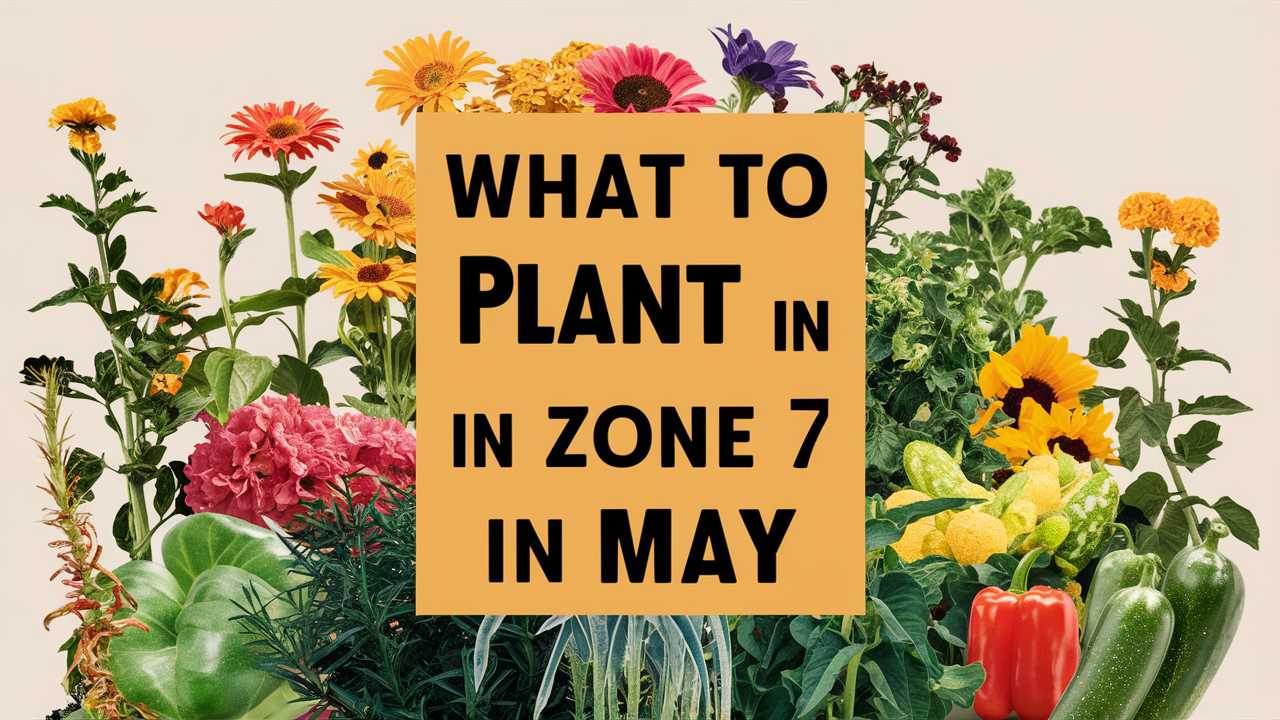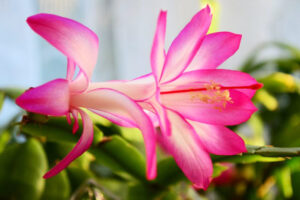In this article, we will explore what vegetables, flowers, perennial flowers, bulbs, fruits, herbs, and landscape plants can thrive when planted in Zone 7 specifically in May.
Vegetables To Plant
When May arrives in Zone 7, the soil has warmed sufficiently to support the growth of many different vegetables. This month marks the transition into the warm season, allowing for a rich selection of hardy veggies. Here is a list of vegetables to plant in May:
Tomatoes
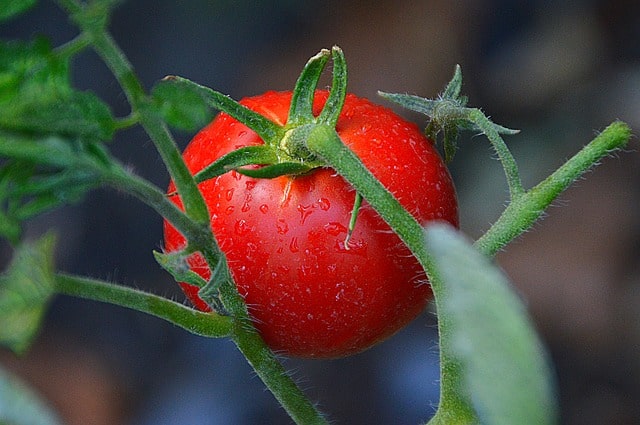
Tomatoes are a beloved crop for home gardeners and thrive in the warm weather of Zone 7. May is the perfect time to transplant started seedlings. Select varieties like ‘Early Girl’ or ‘Cherokee Purple,’ which are known for their robust flavor and adaptability to various growing conditions. Tomatoes prefer well-drained soil with a pH of 6.0 to 6.8 and benefit from being planted in a location that receives at least six to eight hours of direct sunlight per day. It’s essential to harden off seedlings before transplanting to ensure they acclimate to outdoor conditions. Plant them deep in the soil; bury the stem up to the first set of leaves to encourage a stronger root system. Protect young plants from any late frosts, which can still occur in early May.
Peppers

Peppers thrive in the warm temperatures of Zone 7, making them an excellent choice for May planting. Transplant seedlings about 18 inches apart in full sun for best results. Varieties like ‘Bell,’ ‘Jalapeño,’ and ‘Habanero’ offer a fantastic range of flavors. Peppers prefer temperatures between 70°F and 85°F and require well-drained soil rich in organic matter. It’s crucial to water them thoroughly, especially during dry spells, but avoid waterlogging, as peppers can be susceptible to root rot. Watch for pests like aphids and spider mites, and use organic insecticidal soap as a preventive measure.
Cucumbers
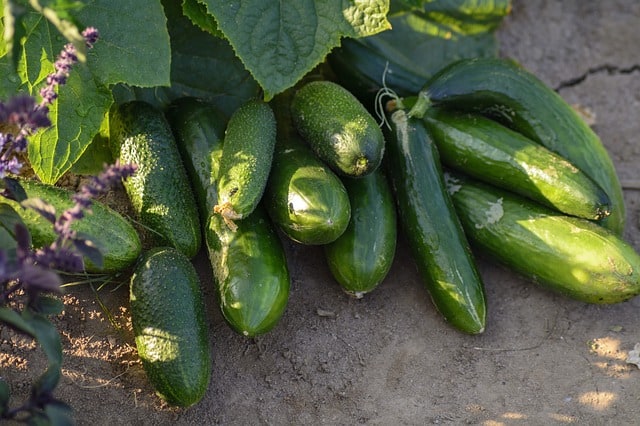
Cucumbers are fast-growing and ideal for planting in May. Sow seeds directly into the ground or transplant seedlings after the last frost. Varieties like ‘Marketmore’ or ‘Burpless’ are excellent choices for their crisp texture and flavor. Cucumbers prefer soil temperatures of at least 65°F and grow best when spaced about 12 inches apart. They thrive in well-drained, fertile soil and require consistent moisture, particularly at the fruiting stage. To promote better air circulation and reduce the risk of powdery mildew, consider using trellises or planting in raised beds.
Squash
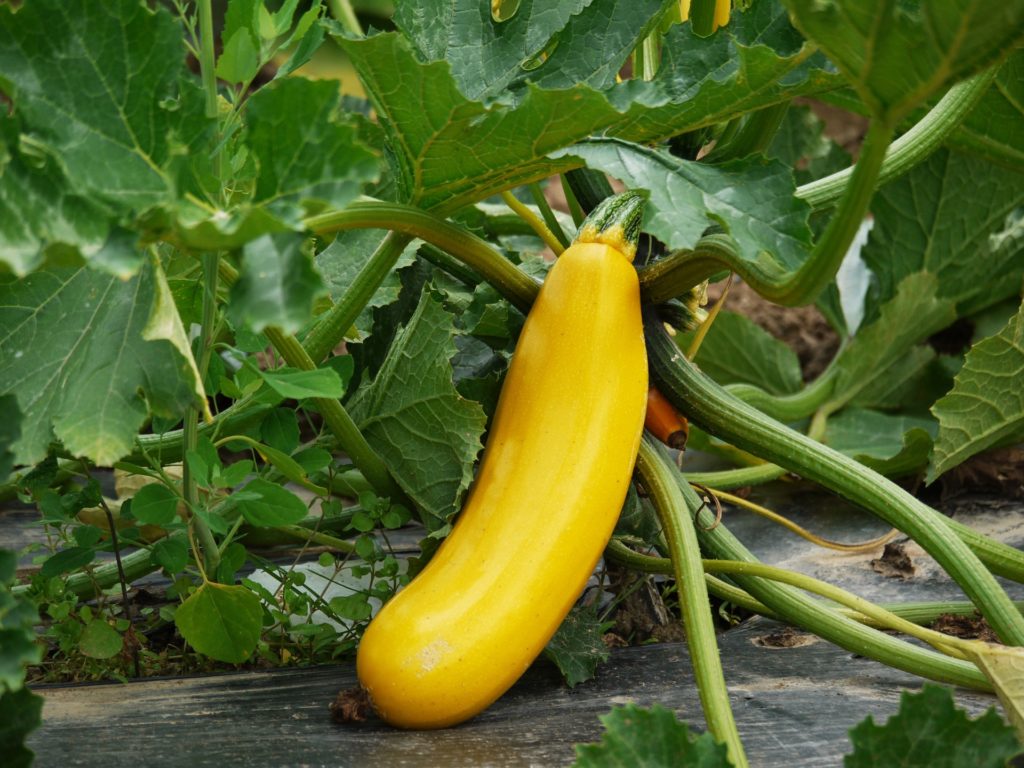
Summer squash, such as zucchini and yellow squash, can be planted in May. These plants grow quickly and should be spaced about three feet apart to allow for their sprawling habits. Squash prefers warm soil conditions (71°F to 90°F) and should be planted in full sun. They thrive in rich, well-drained soil, so adding compost or organic matter before planting can improve yield. Squash requires regular watering, especially during flowering and fruit development, and watch for pests like squash borers by inspecting stems regularly for holes or frass (sawdust-like material).
Beans
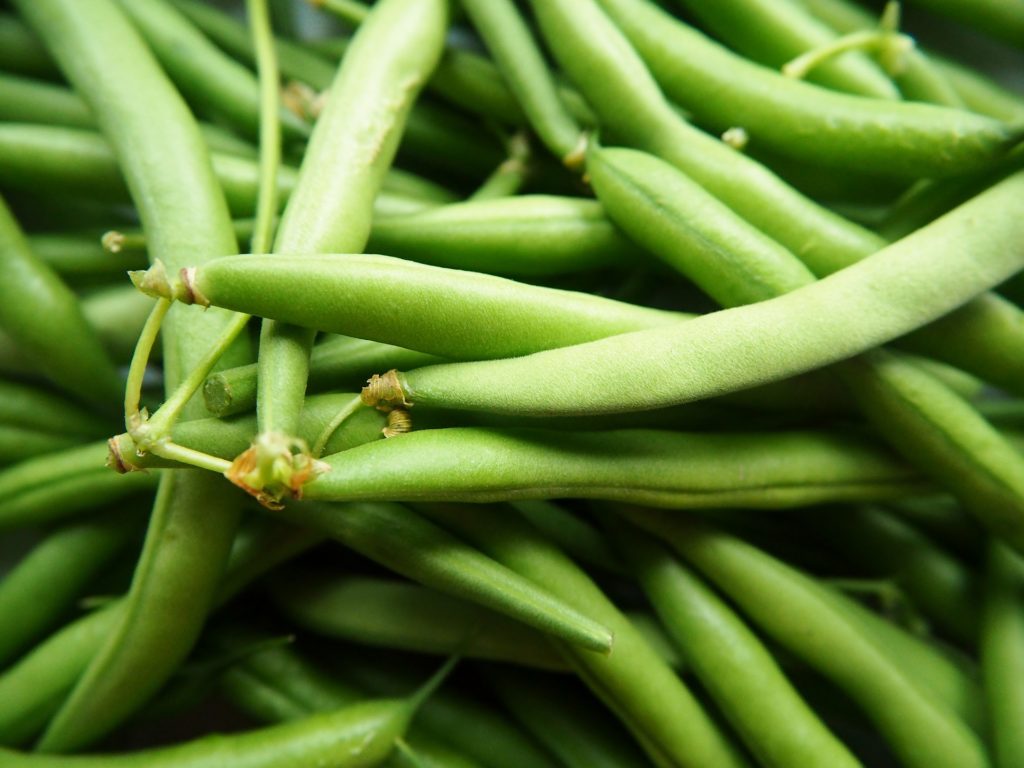
Bush and pole beans can be directly sown into the garden in May. Varieties like ‘Blue Lake’ or ‘Kentucky Wonder’ are popular options. Beans prefer warmer temperatures—ideally above 60°F—and will grow rapidly in well-draining soil with adequate sun exposure. They are nitrogen-fixing plants, enriching the soil as they grow. Sow seeds about an inch deep and 2 to 4 inches apart, and be sure to water them during dry spells. Support pole beans with trellises to facilitate easier harvesting. Avoid planting beans in the same area previously occupied by other legumes to minimize disease risk.
Corn
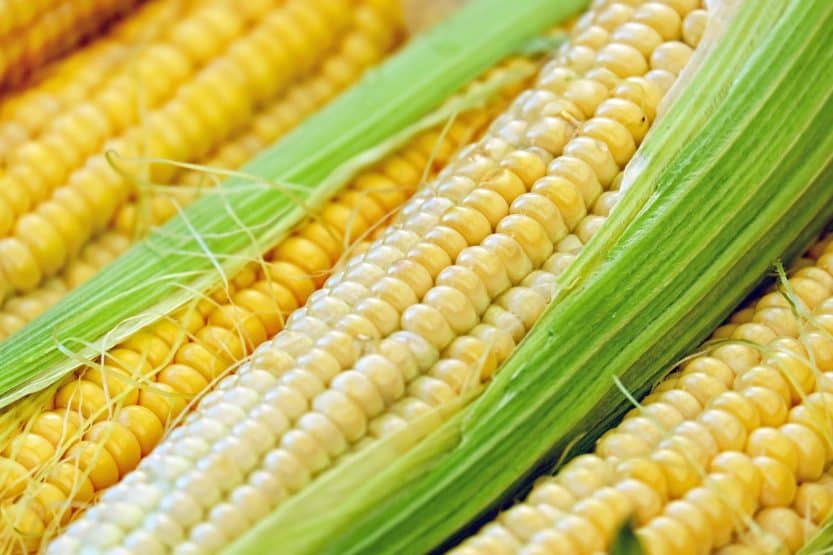
Corn is another great option to sow directly in May. Plant seeds about 1-2 inches deep, spacing them about 12 inches apart. Varieties like ‘Silver Queen’ or ‘Golden Bantam’ will add sweetness to your garden. Corn thrives in warm soil, ideally above 60°F, and needs full sun to achieve its sweet potential. Corn grows best in fertile, well-draining soil; adding compost before planting can help improve nutrient availability. It’s also essential to plant corn in blocks for better wind pollination to ensure a good yield. Water deeply during dry periods, aiming for about an inch of moisture per week.
Carrots
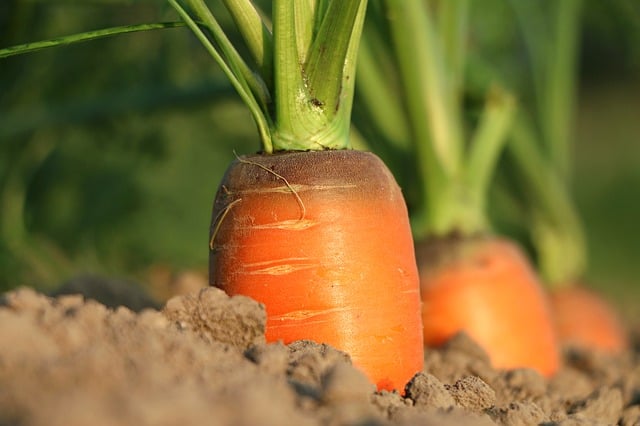
Carrots can be sown in May for a late summer harvest. Opt for varieties like ‘Nantes’ or ‘Imperator,’ which are well-suited to the season. They do well in cooler soil but thrive once temperatures rise. Prepare the soil by tilling to a depth of at least 12 inches to allow for proper root growth. Ensure the soil is loose and free of rocks or hard clumps, as these can inhibit the growth of the roots. Water regularly, keeping the soil consistently moist but not soggy, to prevent the roots from becoming woody.
Lettuce
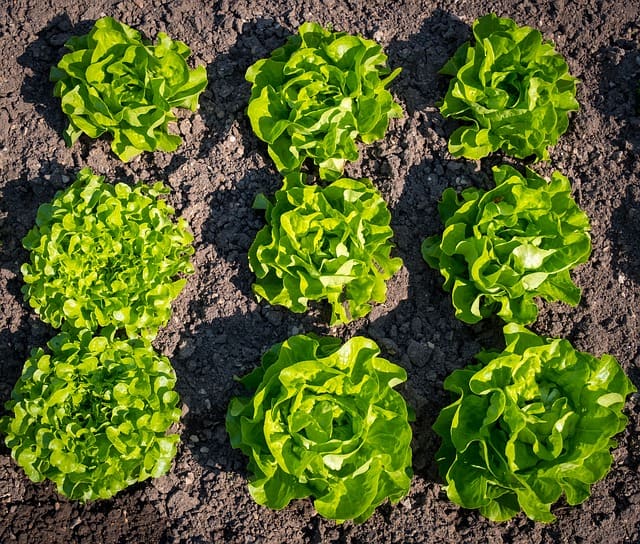
While lettuce can be planted earlier in the spring, May is still a good time for sowing heat-resistant varieties such as ‘Butterhead’ or ‘Romaine.’ Lettuce prefers cooler weather and can bolt (flower prematurely) if temperatures soar. Sow seeds directly in rows and thin seedlings to prevent overcrowding. Keep the soil consistently moist but avoid wet conditions which can lead to diseases. Provide some shade during the hottest parts of the day, possibly by intercropping with taller plants or using shade cloth to help extend the growing season.
Radishes
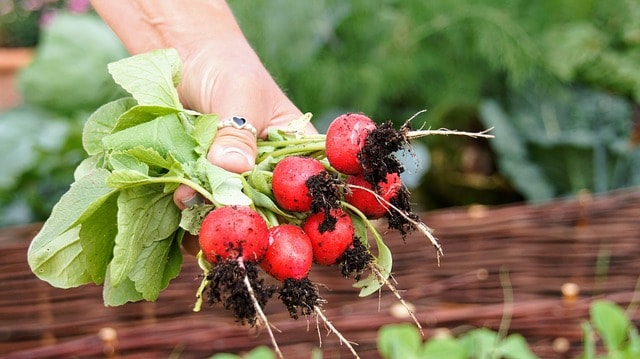
These fast-growing veggies are perfect for planting in May, with a quick turnaround to harvest in about 30 days. Varieties like ‘Cherry Belle’ or ‘French Breakfast’ are typically favored for their delightful crunch. Radishes prefer cooler soils but can handle warmth as long as they have sufficient moisture. Sow seeds about half an inch deep in well-drained soil, and consider staggering sowings every week or two for continuous harvests. Ensure proper watering, particularly as they mature, to avoid them becoming spicy or fibrous.
Kale
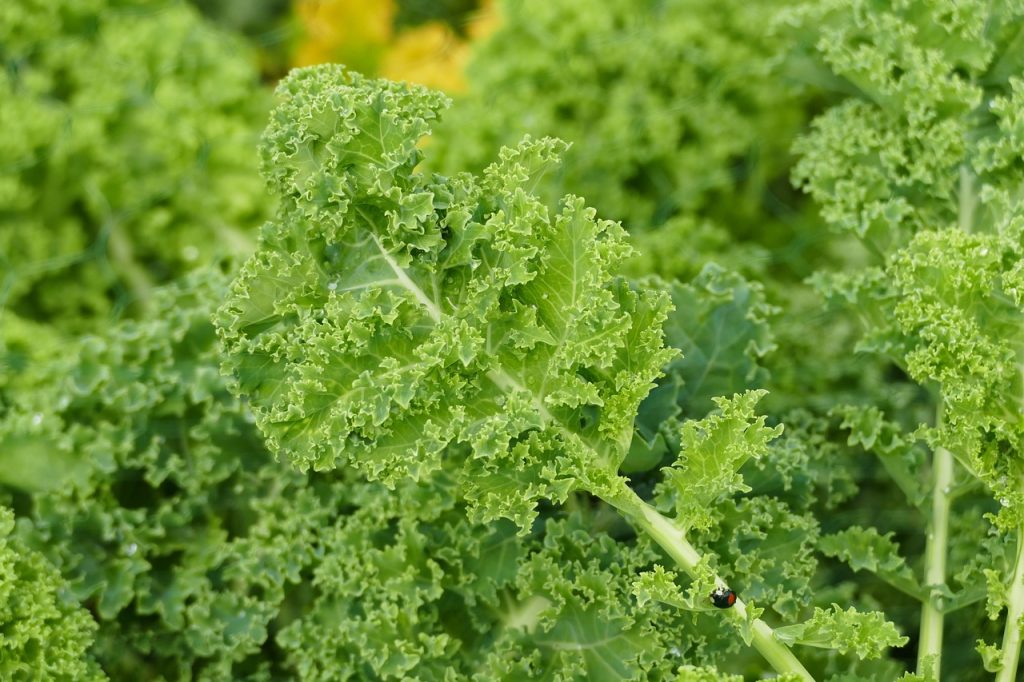
This nutrient-dense leafy green is a fantastic option for May planting. Varieties such as ‘Lacinato’ or ‘Winterbor’ provide delicious, hardy greens. Kale can handle a wide range of temperatures but will bolt if conditions become too hot. Plant seeds about 1/4 to 1/2 inch deep and space them 12 to 18 inches apart. Consistent watering is crucial to prevent leaves from becoming tough. Harvest leaves regularly to promote continued growth, and consider using organic mulch around plants to retain soil moisture and suppress weeds.
In summary, May in Zone 7 presents an excellent opportunity to cultivate a wide variety of vegetables that can thrive in warm soil, ranging from tomatoes and peppers to beans and radishes. Understanding each plant’s requirements for temperature, soil, and moisture will not only encourage successful growth but lead to a bountiful harvest.
Flowers To Plant
May is a vibrant time for flowering plants in Zone 7, where gardeners can select colorful blooms that can handle the warming temperatures. Here are some fantastic choices for sultry May:
Marigolds
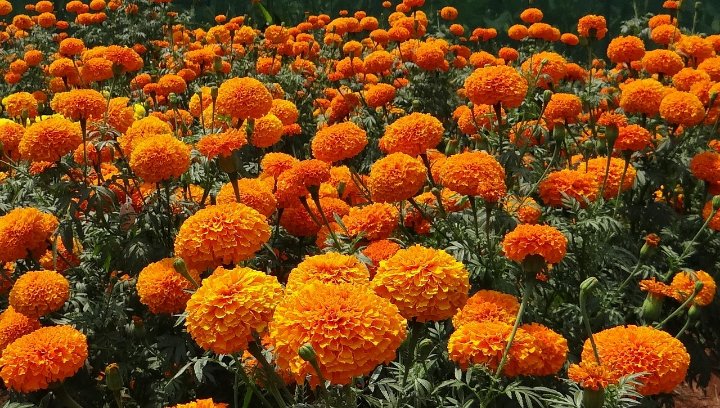
Marigolds are resilient annual flowers perfect for brightening up the garden. They prefer well-drained soil and thrive in full sun, where they can bloom continuously from late spring through fall. Marigolds generally need little maintenance beyond regular watering, especially during dry spells. When planting, space them 10 inches apart to allow for airflow and prevent diseases. They are also excellent companions for vegetables, helping to repel pests like nematodes.
Zinnias
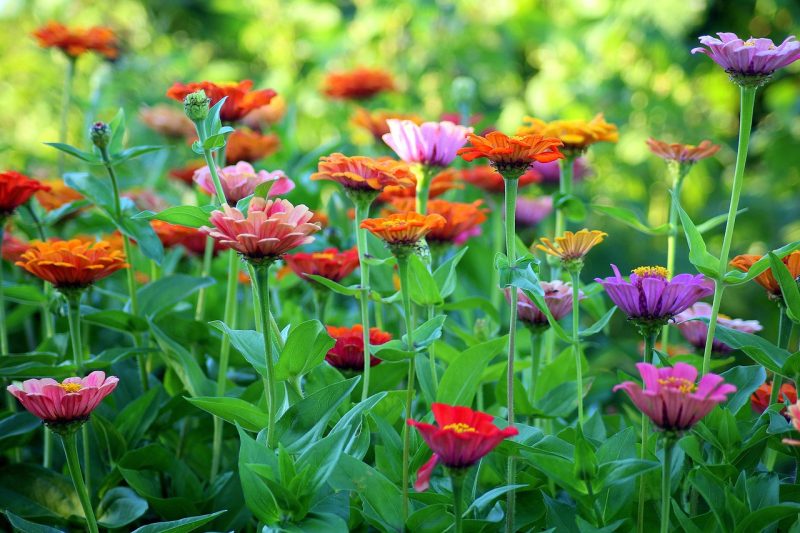
Zinnias are hardy annuals that love warm temperatures and full sun. Easy to grow from seed, they can be sown directly into the soil in May after the last frost. With blooming varieties available in various colors and sizes, they create a dynamic, eye-catching display. They prefer well-drained soil and regular deadheading to encourage further blooming. Water them at the base to keep the leaves dry and reduce the risk of fungal diseases.
Petunias

Petunias are delightful annual flowers perfect for hanging baskets or sunny borders. They thrive in well-drained soil and will bloom profusely throughout the summer if deadheaded regularly. Petunias prefer full sun but can tolerate partial shade, making them suitable for various garden situations. Ensure consistent watering, particularly during dry spells. Composite and trailing varieties offer numerous options for vertical gardens and container arrangements.
Cosmos
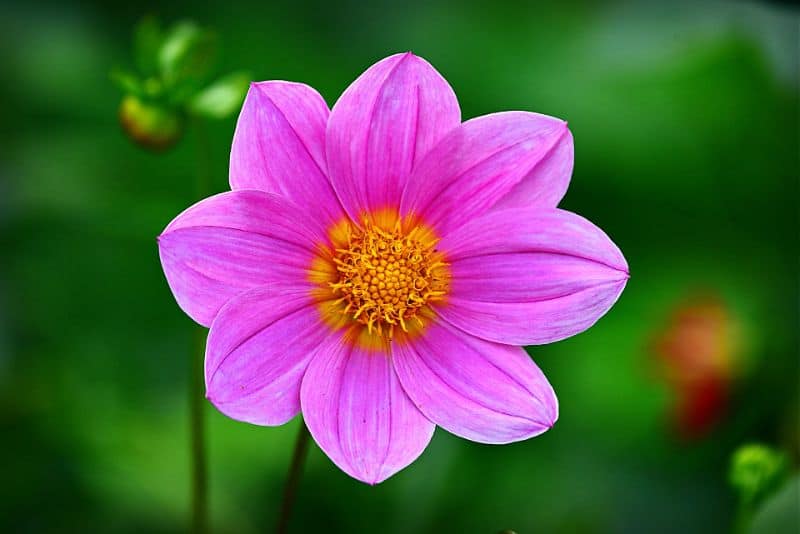
Cosmos are low-maintenance annuals that thrive in poor soil and full sunlight. They grow tall, providing a delicate display of blossoms that attract butterflies. Direct sow seeds into the soil in May for robust growth. Space the seeds approximately 12 inches apart, as they can become quite bushy. Cosmos prefers average moisture but can tolerate drought conditions once established. Regularly deadheading can enhance blooming throughout the summer.
Sunflowers
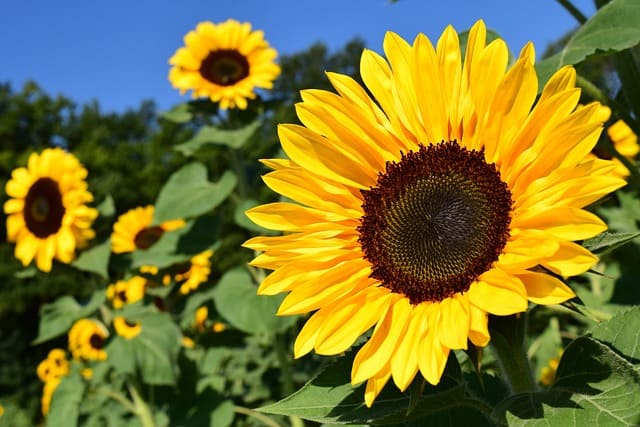
Sunflowers are iconic summer bloomers that bring fun and cheer to gardens. Sown directly into the soil in May, they provide quick growth and large, bright blooms. Ensure they are planted where they get full sun and enough space (6-12 inches apart depending on the variety). Tall varieties may need support in windy areas. Sunflowers are also great for attracting pollinators, making them an excellent addition to any garden ecosystem.
Snapdragons
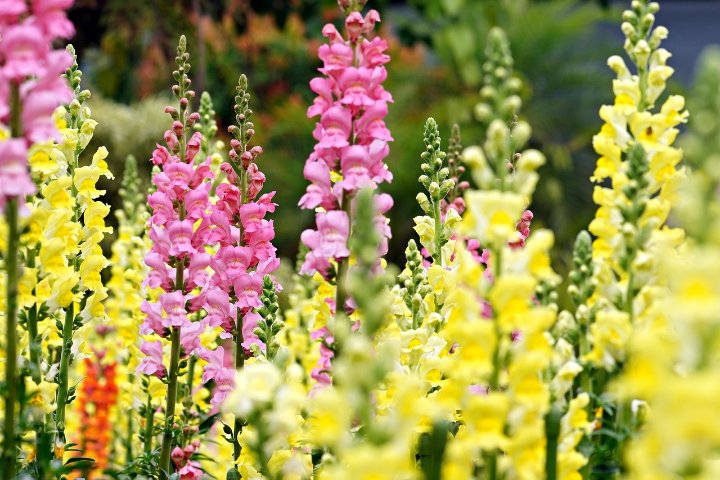
Though snapdragons prefer cooler conditions, May is still a suitable time for transplanting as the risk of frost passes. Available in a range of colors, snapdragons thrive in well-drained soil and can handle partial shade. Regular deadheading encourages continued blooming throughout the season. Depth-wise, seedling transplants should be placed at the same depth they were growing in the pot. A balanced fertilizer can help establish strong growth.
Nasturtiums
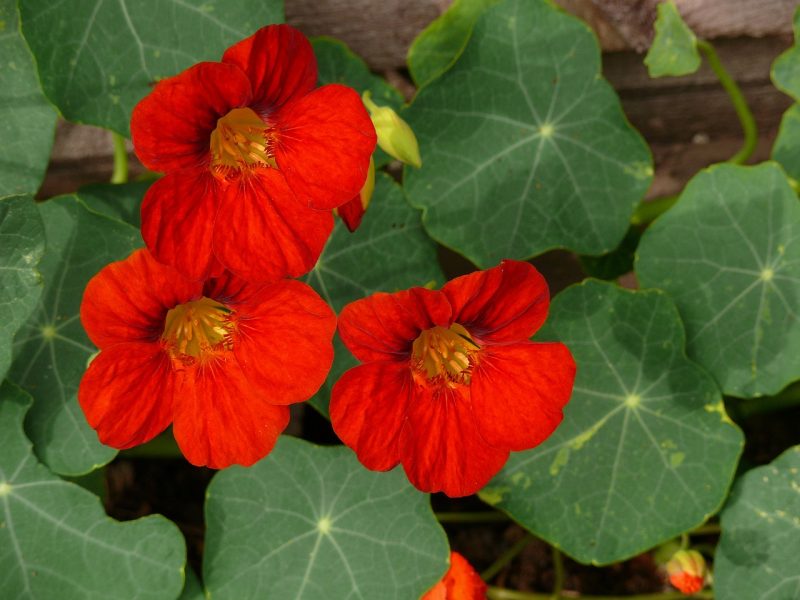
Nasturtiums are not just colorful annuals; they are also edible plants that can enhance salads and garden beds. Sow seeds directly in the garden after the last frost, in well-draining soil with plenty of sunlight. They grow quickly and can be used as a ground cover or trailing plant in pots. Nasturtiums are relatively pest-resistant and can help repel aphids, making them great companions for vegetables.
Dahlias
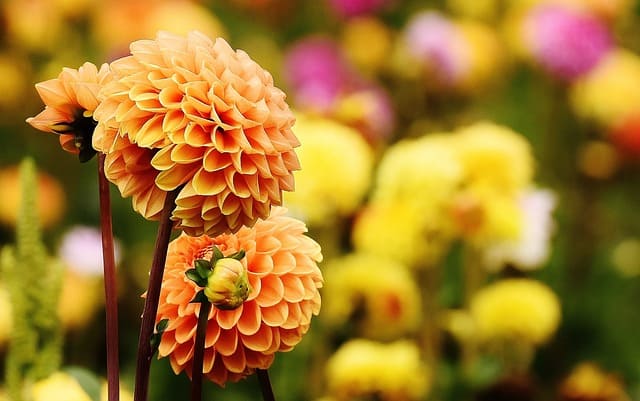
Dahlias can be planted in May once the threat of frost has passed. These tuberous perennials require rich, well-drained soil and ample sunlight. Plant tubers 6-8 inches apart, and be sure to stake taller varieties to support their blooms as they mature. Dahlias thrive with regular watering but require good drainage to avoid root rot. Fertilizing them mid-summer can enhance bloom production, and be prepared to deadhead spent flowers to encourage continuous blooming.
Lantanas
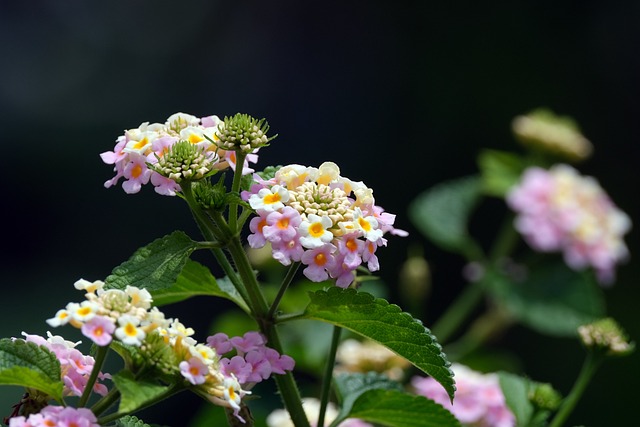
Ideal for adding brightness and attracting pollinators, Lantana is a heat-loving perennial that provides color all summer long. Planting in May ensures that they’ll thrive in both full sun and drier soil conditions. Lantana is known for its spread and can take considerable space, so give them room to flourish. Fertilize once in spring and water only when necessary, as they are drought-tolerant and prefer less frequent waterings.
Salvia
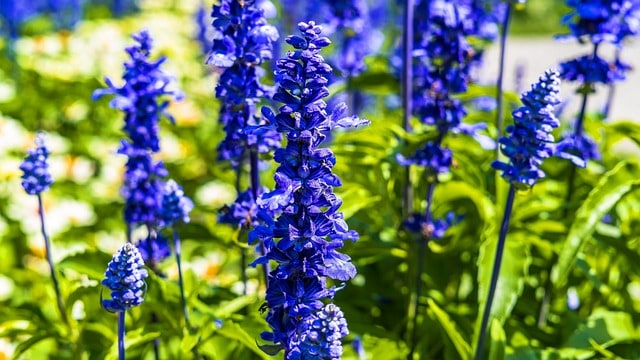
Salvia is a drought-tolerant perennial that offers beautiful spikes of flowers that attract butterflies and hummingbirds. May is a great time to plant or transplant Salvia in well-drained soil under full sun. Choose robust varieties like ‘Salvia nemorosa’ or ‘Mealy Cup Sage.’ Pruning spent blooms will encourage an extended blooming season. Regular watering will help establish roots but minimize water during the hotter months as Salvia prefers drier soil conditions.
In summary, many beautiful flowers can flourish in Zone 7 during May. From the cheerful marigolds and enchanting zinnias to the stately dahlias and vibrant lantanas, the array of colorful blooms can transform any garden into a paradise of colors and scents.
Perennial Flowers to Plant
Gardeners in Zone 7 can dive into perennial planting in May, when the risk of frost is minimal. These sturdy plants will return year after year, making them an investment in your garden that pays off with vibrant blooms and foliage. Here’s a look at ten perennials to consider planting this month:
Echinacea (Coneflower)
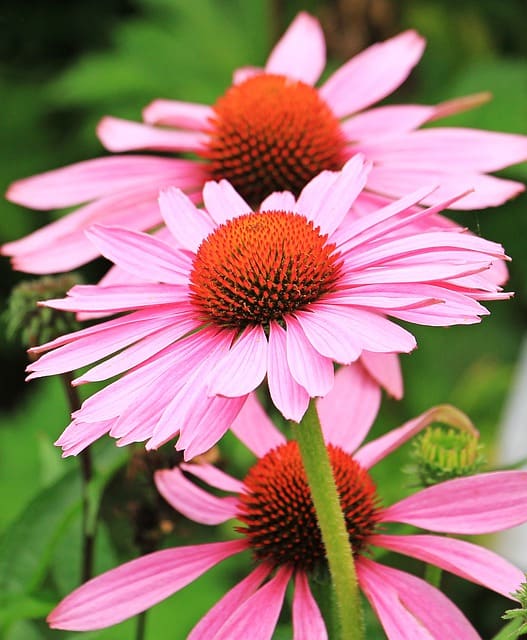
Echinacea is known for its daisy-like blossoms and its ability to attract pollinators. They thrive in well-drained soil and require full sun to produce the best flowers. Plant them in May, spacing them about 18 to 24 inches apart to allow for their spreading habit. Once established, coneflowers are drought-tolerant and need watering during dry spells. Deadheading spent blooms promotes further flowering and stems can also withstand some degree of neglect, making them suitable for low-maintenance gardens.
Black-eyed Susan (Rudbeckia)
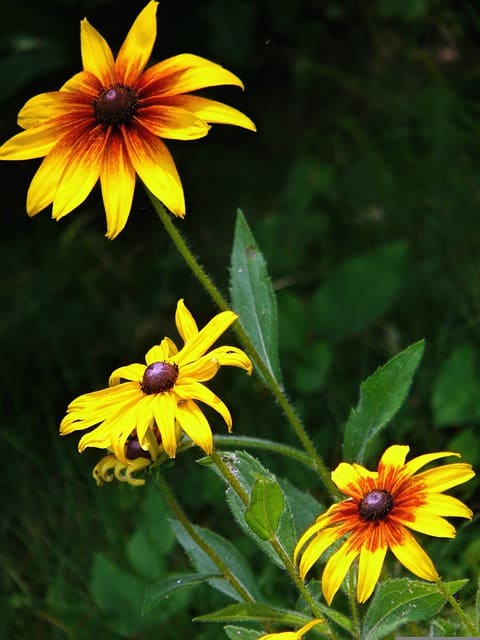
This hardy perennial produces stunning yellow flowers with dark centers and is an excellent choice for May planting. Black-eyed Susans thrive in full sun and are adaptable to almost any soil type. Plant them about 12 to 18 inches apart for optimal growth. They attract butterflies and other beneficial insects, and once established, they require minimal watering. Deadheading in late summer can encourage additional blooms and prevent unwanted self-seeding.
Daylilies
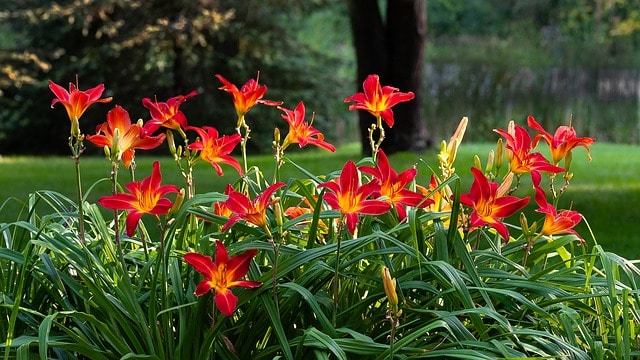
Daylilies are known for their resilience and adaptability, making them perfect for gardens in Zone 7. Planting in May ensures strong root growth before summer heat sets in. They thrive in a range of soil conditions but prefer well-drained, average soil in full sun to partial shade. Daylilies should be spaced about 18 to 24 inches apart. While they can tolerate dry conditions once established, regular watering will encourage healthier foliage and vibrant blooms.
Sedum (Stonecrop)
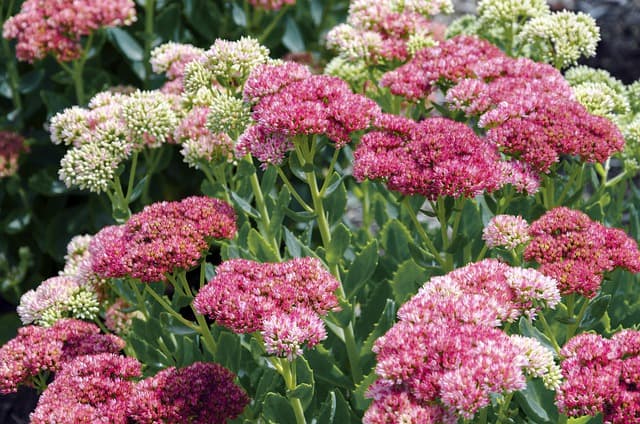
Sedums are excellent ground cover perennials suited for low-maintenance gardens. They thrive in poor, well-drained soil and full sun. Planting in May allows them to establish roots before the heat of summer. Space these low-growing plants about 12 inches apart. Sedums are drought-tolerant but benefit from occasional watering during long dry spells. They come in various textures and colors, contributing to visual variety in the garden while also attracting pollinators.
Lavender
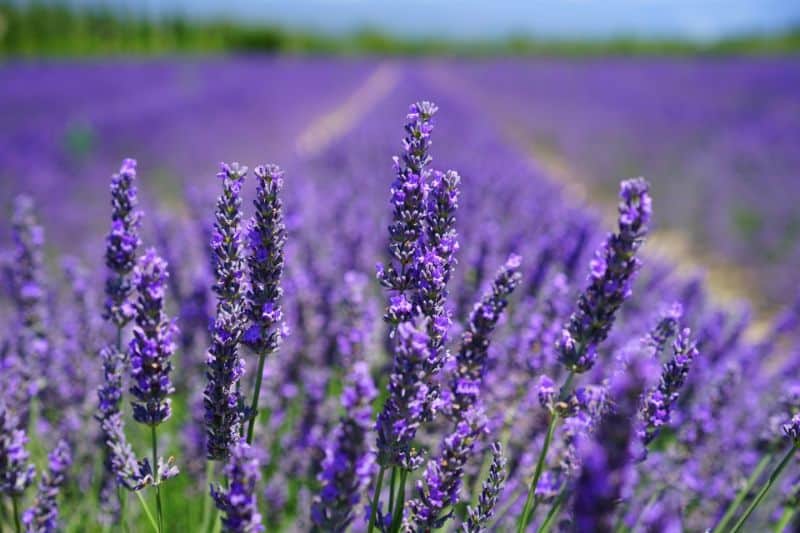
This fragrant perennial prefers well-drained soil and full sun, making it an ideal choice for May planting. Lavender can be started from seeds or nursery plants, ensuring that you space them at least 18 inches apart to allow for good air circulation. Regular pruning after flowering enhances shrub shape and promotes bushier growth. Once established, lavender is drought-tolerant, requiring minimal watering. Its aromatic foliage and beautiful purple blooms make it a favorite in herb gardens, and it can also attract pollinators while deterring certain pests.
Astilbe

Astilbes are shade-loving perennials that brighten up any corner of your garden. Plant them in rich, moisture-retentive soil for the best performance. They can tolerate a range of light conditions, though they thrive in partial shade. When planting in May, ensure you space them about 12-24 inches apart for ample airflow between plants. Regular watering is essential to keep the soil moist, especially during dry spells, and a layer of mulch can help suppress weeds and retain moisture around their roots.
Peonies
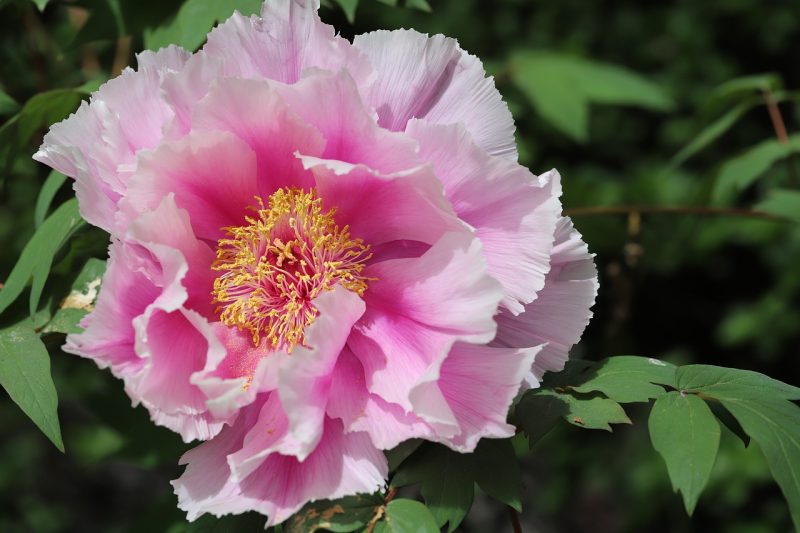
Peonies are classic garden favorites known for their large, fragrant blooms. May is an excellent time for planting these perennials as they establish strong roots before the heat arrives. They prefer full sun and rich, well-drained soil. Space plants about 3 feet apart to accommodate their mature size. Peonies need regular watering during dry periods, especially in their first growing season after planting, and supporting blooms using stakes can prevent damage during storms.
Hostas
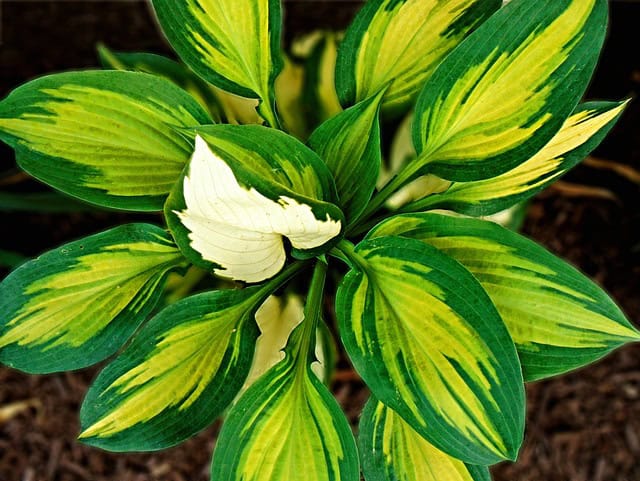
Hostas are optimal for shaded areas and add fabulous foliage variety to gardens. May is a wonderful month for planting, giving them time to establish roots before peak summer heat. Space hostas 2-3 feet apart, depending on the variety, and plant in well-drained, rich soil. Regular watering, particularly in the first growing season, ensures healthy growth. Mulching additionally helps retain moisture and prevent weeds, contributing to lush foliage and robust plants.
Veronica (Speedwell)
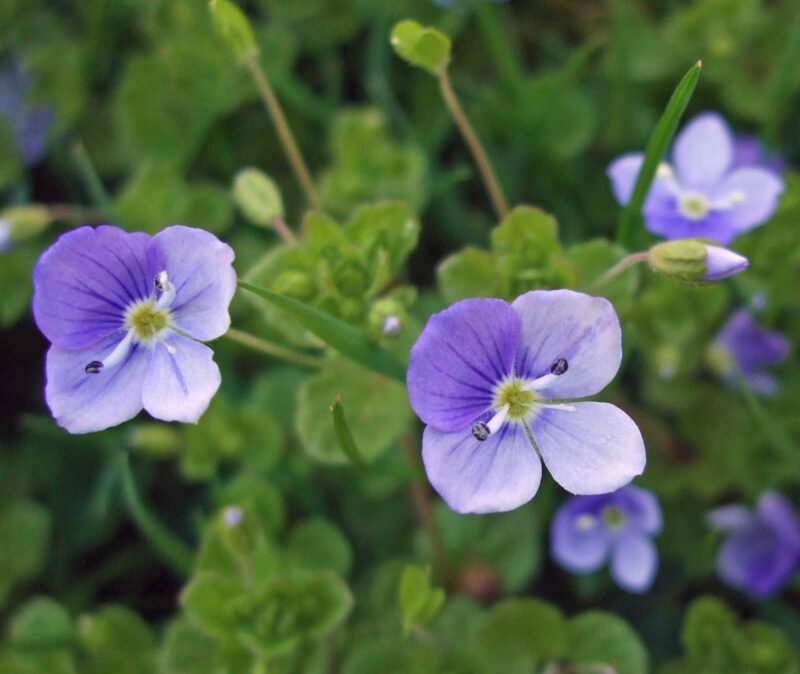
Veronica is a lovely perennial that produces vibrant blue flowers throughout summer. They prefer full sun and well-drained soils, though they can tolerate partial shade. When planting in May, space them about 12 inches apart. Frequent watering in the initial weeks after planting will help them settle in, while established plants will thrive with moderate watering. Regular deadheading encourages more blooms, and they attract beneficial pollinators to the garden.
Phlox (Garden Phlox)
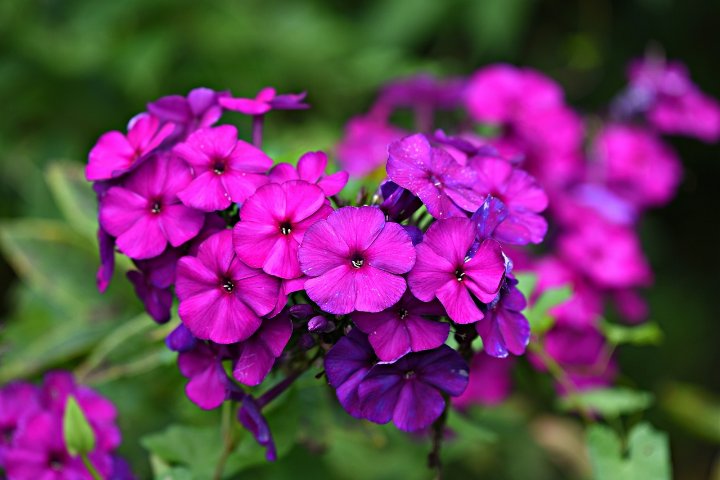
Phlox is a beloved perennial known for its fragrant flowers, which attract butterflies. They thrive in well-drained soil and full sun, blooming from early summer through fall. Transplant established seedlings for a robust growth season in May. Space plants 12-18 inches apart and provide consistent moisture during hot spells. Pruning back after flowering encourages bushier growth, and deadheading spent flowers promotes an extended blooming season.
As you venture into the world of perennials in Zone 7, these plants offer lasting beauty and require a range of conditions. From the aromatic lavender to the vibrant black-eyed Susan and the iconic peony, choosing the right perennials will create a stunning landscape that rewards you season after season.
Bulbs To Plant
In Zone 7, May is a wonderful time to plant bulbs that can thrive in the warm summer sun. Although many are typically planted in the fall, spring planting can still benefit your garden with color and interest. Here are some appealing bulbs to consider:
Dahlias

Dahlias can be planted in May once the threat of frost has passed. These tuberous perennials require rich, well-drained soil and ample sunlight. Plant tubers about 6-8 inches apart and at a depth of 4-6 inches. Be sure to stake taller varieties to enhance their growth and stability as they bloom magnificently throughout summer. Dahlias thrive with consistent watering, especially during dry periods, and can benefit from a balanced fertilizer in mid-summer. Deadhead flowers regularly to promote continued blooming.
Gladiolus

These show-stopping flowers are perfect for May planting. Gladiolus corms can be planted directly in well-drained soil in a sunny location, spaced about 4-6 inches apart and 4-6 inches deep. They require regular watering, particularly during the dry blossoming phases, and should be staked for support during windy days. Gladiolus blooms from mid-summer brings tall flower spikes that can create stunning bouquets.
Lilies

Lilies are a classic choice for gardeners and can be planted in May as the soil warms. Varieties like ‘Asiatic,’ ‘Oriental,’ and ‘Trumpet’ lilies thrive in well-drained soil with full sun. Plant bulbs at a depth of 6-8 inches, and space them about a foot apart for proper air circulation. Water them thoroughly after planting and maintain consistent moisture, especially during the blooming period. Fertilizing during the growing season can promote vigorous growth and vibrant blossoms.
Canna Lilies
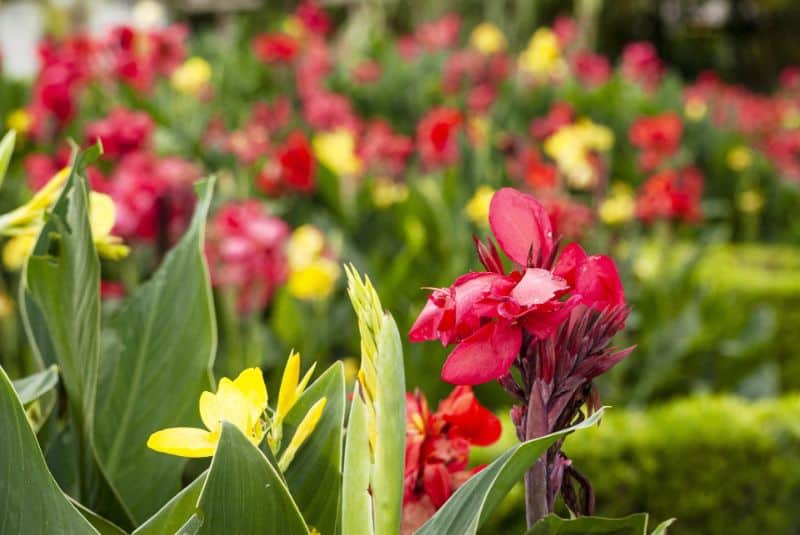
Canna lilies are tropical flowers that add vibrant color and exotic flair to gardens. Planting them in May allows ample time for growth and blooming throughout summer. They prefer full sun and moist, well-drained soil, which helps them thrive. Plant canna rhizomes about 4 inches deep and 2-3 feet apart. Regular watering is key, especially during dry spells, and they can be fertilized every few weeks to support healthy growth.
Freesias
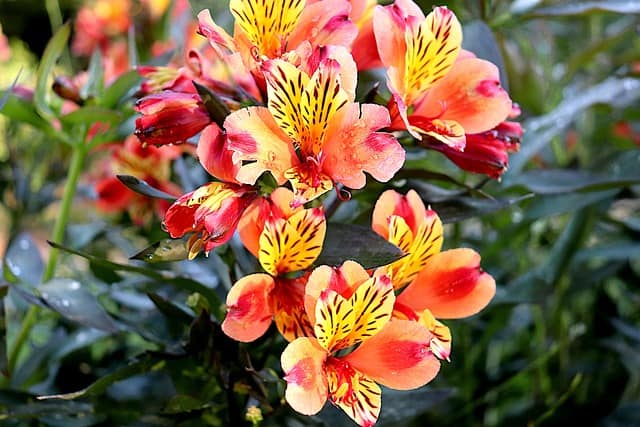
Freesias offer a delightful fragrance and vibrant colors in any garden. Plant corms about 3-4 inches deep and approximately 6 inches apart in well-draining soil with full sun exposure. Freesias prefer slightly cooler conditions but will still thrive if adequately watered. Make sure to water lightly and avoid overwatering during their blooming phase to prevent bulb rot.
Alliums
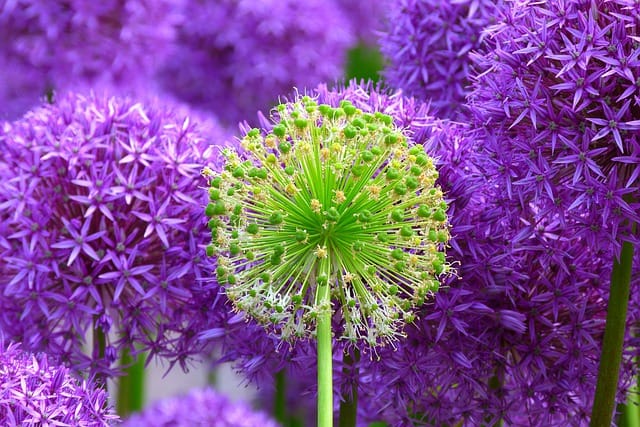
Alliums, or ornamental onions, are dazzling bulbs that produce spherical clusters of flowers, attracting bees and butterflies. Planting is best suited for well-drained soil and full sun. Plant allium bulbs about 4-6 inches deep and space them 12 inches apart. They thrive with minimal maintenance, requiring watering in dry spells until established. These dramatic blooms add stunning height and visual interest to garden beds.
Tiger Lilies
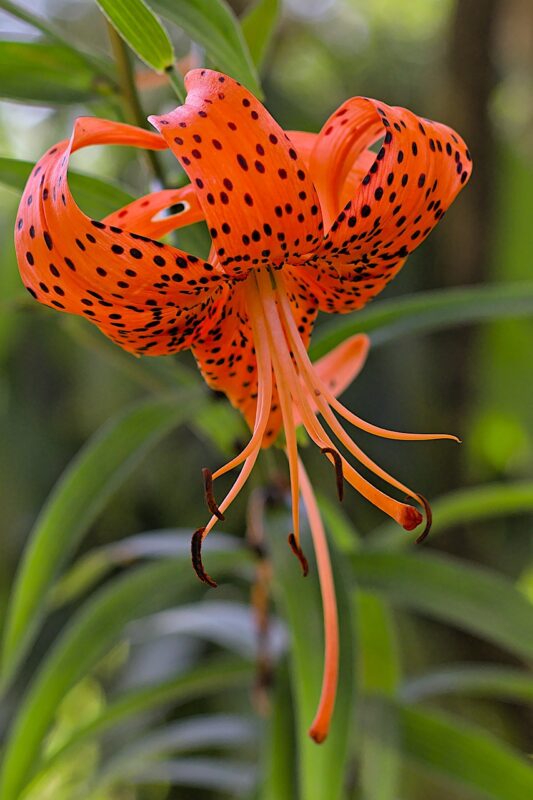
Tiger lilies are beautiful and hardy perennials that can be planted in May. These bulbs prefer well-drained soil and can thrive in full sun to partial shade. Plant bulbs about 6 inches deep and space them at least a foot apart to allow for their growth. Once established, tiger lilies require minimal care. Water them regularly during dry spells, fertilizing in early spring to boost vigor.
Ranunculus
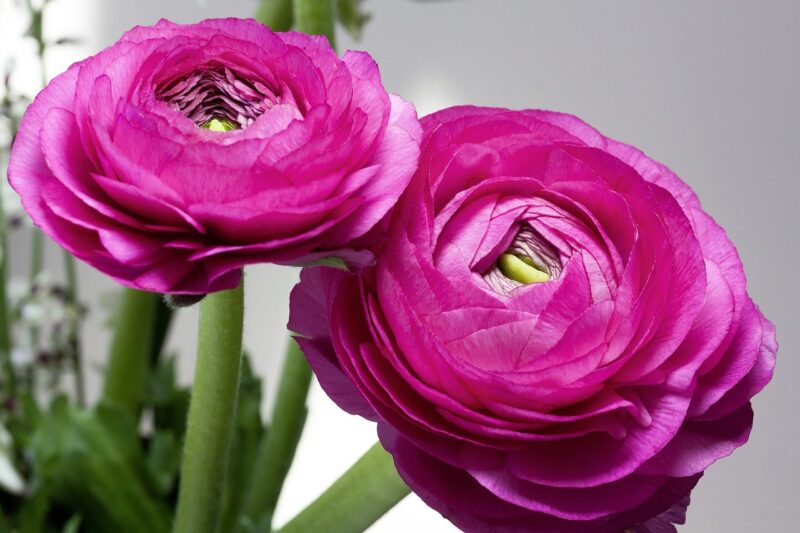
Also known as Persian buttercups, Ranunculus love cooler climates but can be planted in May for summer blooms in Zone 7. When planting, soak the corms in water for a few hours before putting them in well-drained soil 2-3 inches deep and spaced about 6-8 inches apart. These flowers prefer consistent moisture throughout their growing period but can be subject to rot if the soil is too wet.
Narcissus (Daffodils)
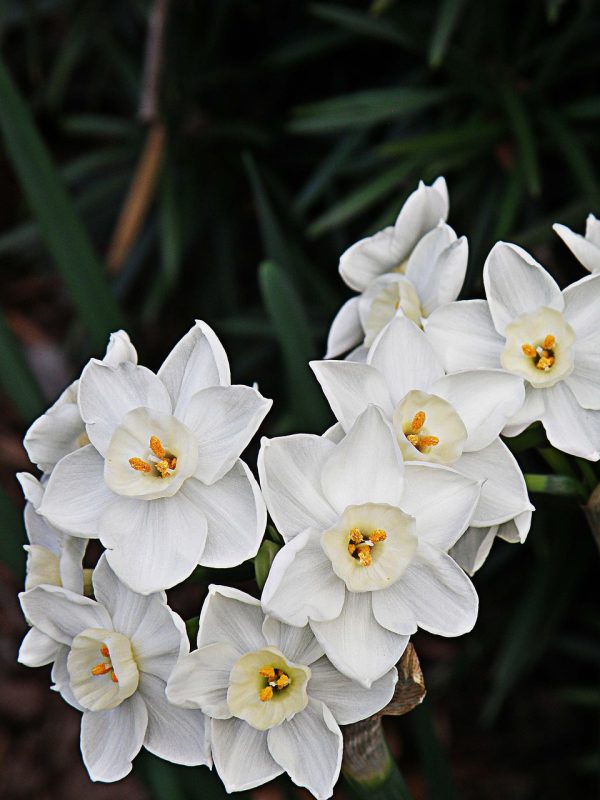
Though typically planted in fall, you may find nursery bulbs ready to plant in May. Daffodils prefer well-drained soil, and planting them at 6-8 inches deep will give them ample room to establish roots. These cheerful flowers thrive in full sun to part shade, and once planted, they are relatively low-maintenance. Regular watering is unnecessary once established, as they are quite drought-resistant.
Scilla (Bluebells)

Scilla, commonly referred to as bluebells, can be planted in May for attractive early spring blooms. They prefer well-drained soil and will flourish in both sun and partial shade. Plant bulbs about 3-4 inches deep and space them 6-8 inches apart. These bulbs prefer moderate moisture and make beautiful carpets of color once established, creating a wildlife-friendly atmosphere in the garden.
With varied flowering times and colors, bulbs planted in May for Zone 7 can significantly enhance your garden, providing your outdoor space with texture and excitement. Embrace the versatility and charm of these bulbs for a breathtaking seasonal display.
Fruits to Plant
May is an excellent month for planting fruit-bearing crops in Zone 7 as the risk of frost is significantly lower. This is the period in which many gardeners can start to enjoy the fruits of their labor. Here’s a look at ten fruits that will thrive when planted in May:
Tomatoes

While technically fruits, tomatoes are commonly treated as vegetables. June-planted varieties such as ‘Brandywine’ and ‘San Marzano’ will yield delicious fruits throughout the summer. Transplanting seedlings in May ensures they establish strong roots before the hottest months. They’re best planted in well-drained soil with a pH of 6.0 to 6.8 and should be spaced 18-24 inches apart. Mulching can help to retain soil moisture and regulate temperature. Staking young plants early prevents breakage during storms, and deep watering encourages healthy root systems.
Strawberries
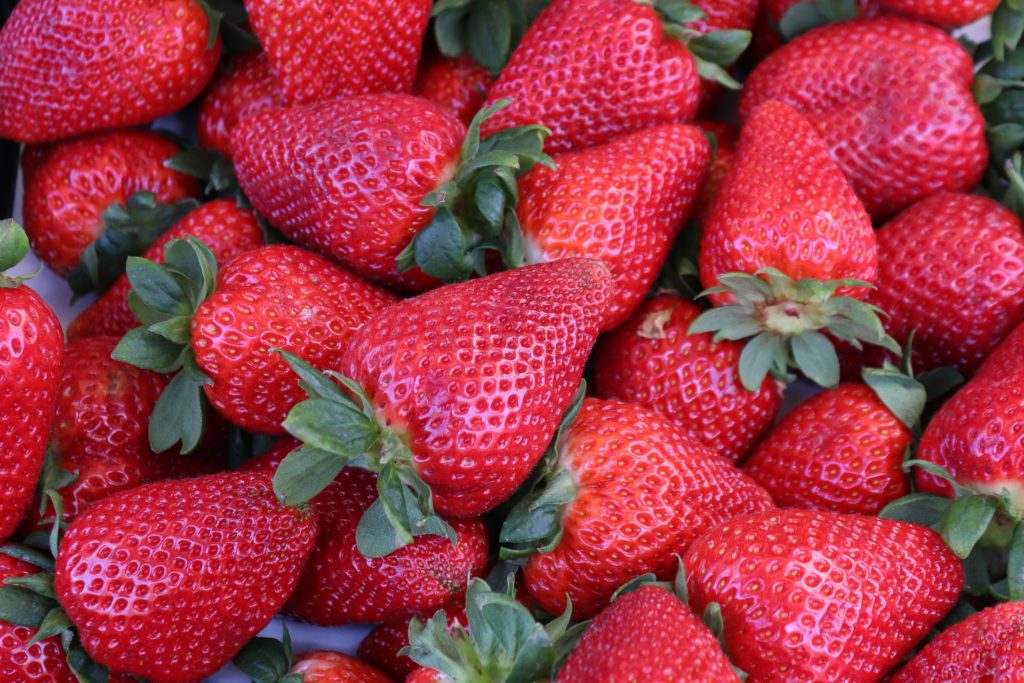
May is prime for planting strawberry plants, specifically June-bearing and ever-bearing varieties. Select disease-resistant types like ‘Earliglow’ or ‘Seascape.’ Strawberries prefer well-drained, slightly acidic soil and full sun, producing delicious fruit in late spring and summer. Plant them in rows, spacing plants about 12-18 inches apart, and water them regularly—especially during dry periods. Mulching can help retain soil moisture while also preventing weeds. Fertilize with a balanced fertilizer after harvest for healthy growth and fruiting in the following seasons.
Blueberries
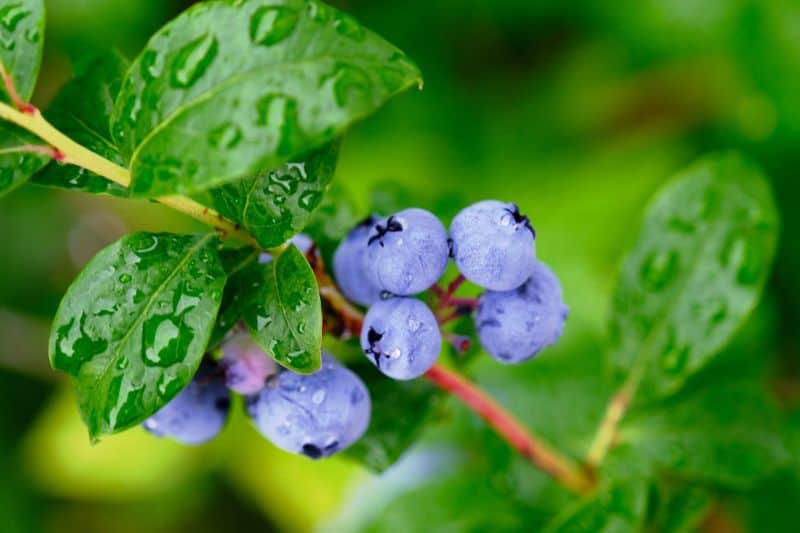
Blueberries thrive in acidic soils with a pH between 4.5 and 5.5. Planting in May allows the roots to establish before summer heat sets in. Choose cultivars such as ‘Bluecrop’ or ‘Patriot,’ which promise excellent fruit production and disease resistance. Space plants about 4-5 feet apart, and amend the soil with peat moss if needed to lower pH. Blueberries need full sun for optimal fruiting and prefer consistent moisture. Watering at the base and mulch will help keep the soil acidic and retain moisture.
Raspberries
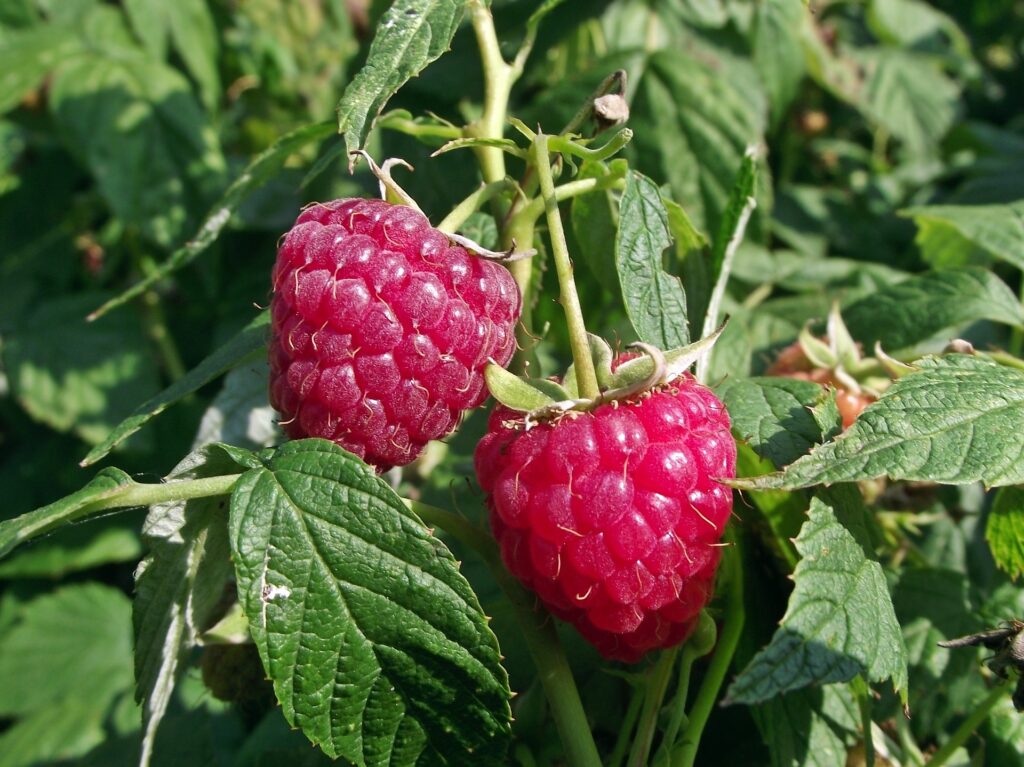
May is an excellent time to plant both summer and ever-bearing raspberry varieties. Opt for types like ‘Heritage’ or ‘Latham’, which produce sweet, delicious berries. Raspberries prefer slightly acidic, well-drained soil and should be planted in full sun. Space canes about 18-24 inches apart. Support canes with trellises for easy harvesting and to prevent them from falling over. Raspberries need regular watering, especially during fruit formation, and pruning can help improve airflow and fruit production.
Blackberries
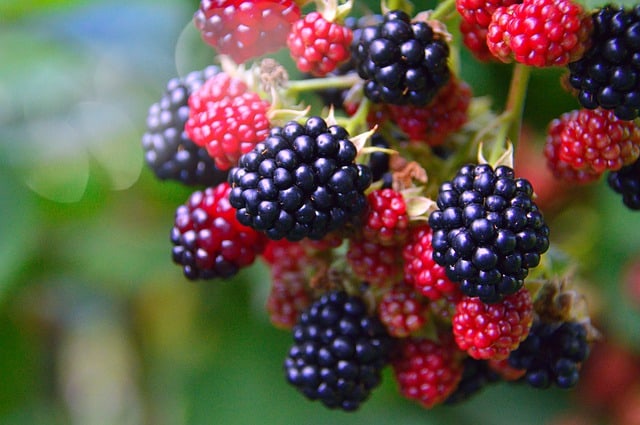
Blackberries are robust fruits that can be heralded as landscape staples. Planting these vigorous vines in May ensures a bountiful harvest later in the season. Varieties like ‘Thornless Blackberry’ produce sweet, juicy fruits and thrive in full sun with moderate watering. Space plants about 2-3 feet apart, and pruning can enhance fruit production and facilitate management.
Cantaloupes
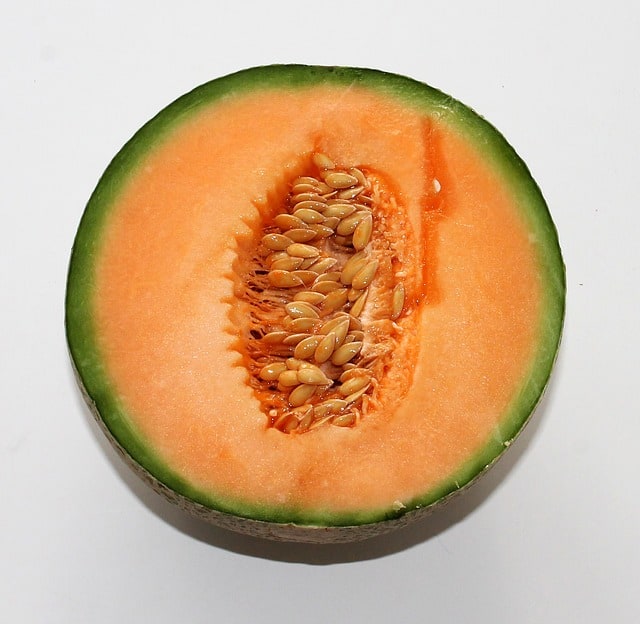
Cantaloupes thrive in warm conditions, making May a perfect time for direct sowing seeds or transplanting seedlings. They prefer rich, well-draining soil and need full sun to produce their sweet fruits. Space plants about 2-3 feet apart and ensure they have consistent moisture, especially as melons form. Using black plastic mulch may help warm the soil and inhibit weeds. Fertilizing every few weeks with a low-nitrogen fertilizer supports healthy fruit development.
Grapes
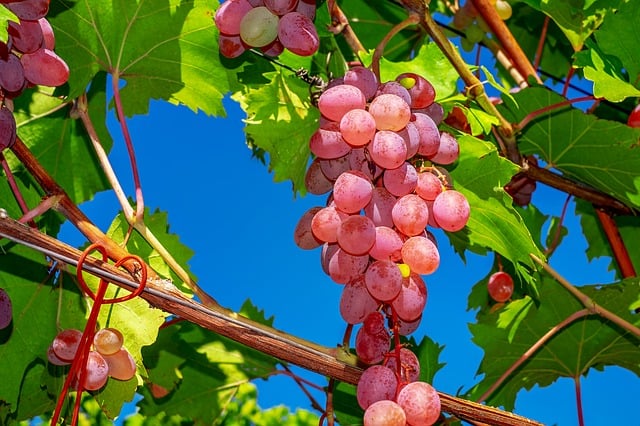
May is a wonderful time to plant grapevines for those interested in home winemaking or fresh eating. Opt for hardy varieties like ‘Concord’ or ‘Cabernet Sauvignon,’ which thrive in well-draining soils. Grapes require full sun and regular watering, particularly during the establishment phase. Space vines at least 6-8 feet apart and provide a sturdy trellis or support for growth. Pruning in late winter helps promote healthy growth and fruiting.
Figs
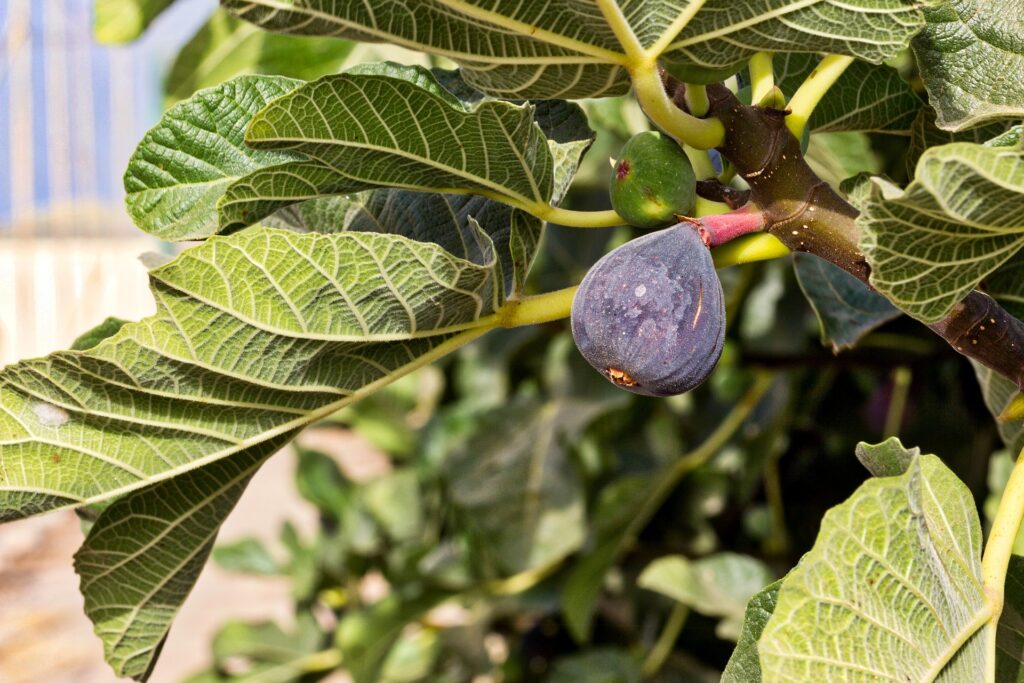
Figs are suitable for warm climates and can be planted in May once the frost has passed. Varieties such as ‘Brown Turkey’ or ‘Celeste’ promise excellent production. These trees thrive in well-drained, fertile soil with full sun and require moderate watering. Space plants about 10-15 feet apart to accommodate their mature size. Pruning figs encourages better airflow and prevents overcrowding while maintaining a desirable shape.
Kiwi
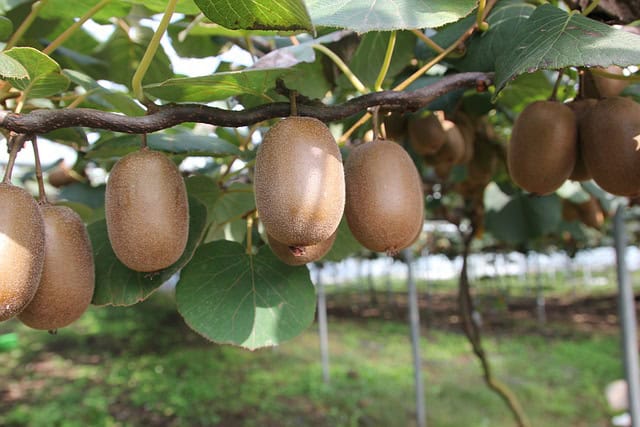
In recent years, kiwis have gained popularity as hardy fruits that can thrive in Zone 7. Planting in May allows the plants to establish before the summer months. Kiwi vines prefer well-drained soils, full sun, and structures for support to help the plant grow. Space plants at least 10-15 feet apart to facilitate good air circulation and growth. Regular watering is required during the growing season, particularly while the fruits develop. Ensure that both male and female plants are present for successful pollination.
These fruits provide varying flavors, textures, and uses, contributing to a well-rounded garden. With proper care and the right conditions, planting fruits in May in Zone 7 can lead to a delightful harvest come late summer and fall.
Herbs To Plant
May is an ideal month for herb gardening, as many herbs thrive in the warm and sunny conditions typical of Zone 7. Here are 10 herbs that can be lush and robust when planted during this month:
Basil
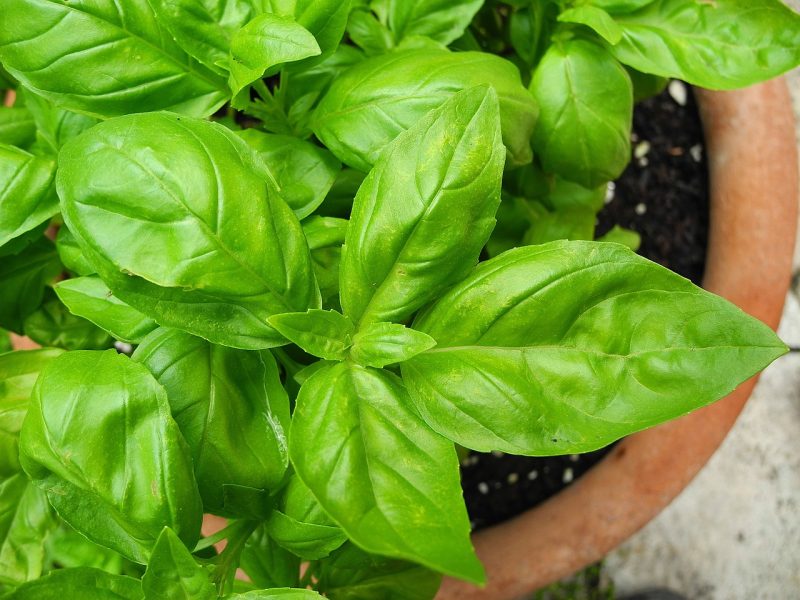
Basil is a beloved summer herb that can be directly sown or transplanted in May. Varieties like ‘Genovese’ and ‘Thai’ flourish in well-drained soil and full sun. This aromatic herb is ideal for culinary use, as its fresh leaves can enhance a multitude of dishes. Basil loves heat but requires consistent watering to thrive; aim for about 1 inch of water each week, applying mulch to retain soil moisture. Pinching off the flower buds will prolong leaf production, so harvest regularly to promote bushier plants.
Cilantro
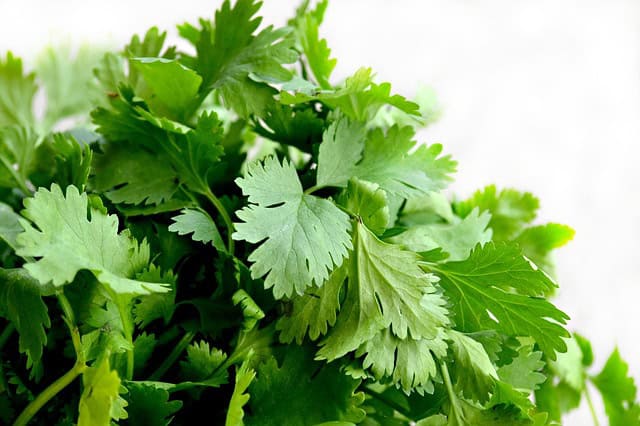
Cilantro is a versatile herb known for its contribution to Latin and Asian cuisines. Planting in May allows cilantro to thrive in cooler conditions before the heat sets in. It prefers well-drained soil and full sun, and seeds should be sown about 1/4 inch deep. It’s a fast-growing herb, maturing in about 3-4 weeks, so succession planting every couple of weeks ensures continual harvest. Water them regularly, ensuring soil moisture but avoiding over-watering, as cilantro can bolt if exposed to extreme temperatures.
Oregano
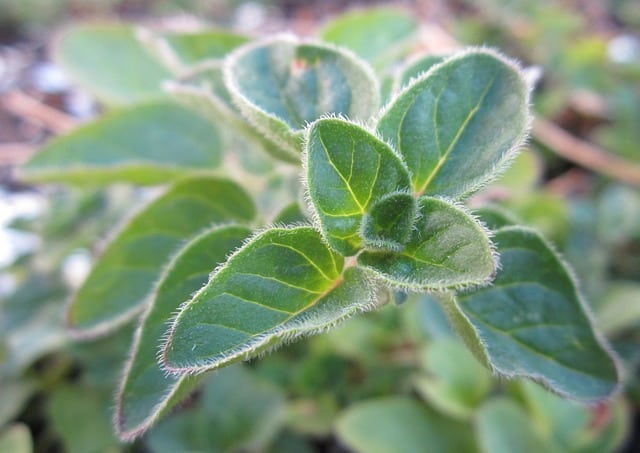
Oregano is a hardy perennial herb that thrives in well-drained soils and full sun. Planting in May encourages strong root growth throughout the summer. Space plants 12-18 inches apart, and water them as needed until established. Oregano requires little maintenance but benefits from a good pruning in summer to promote bushiness and encourage new growth. Once established, it is drought-tolerant.
Thyme
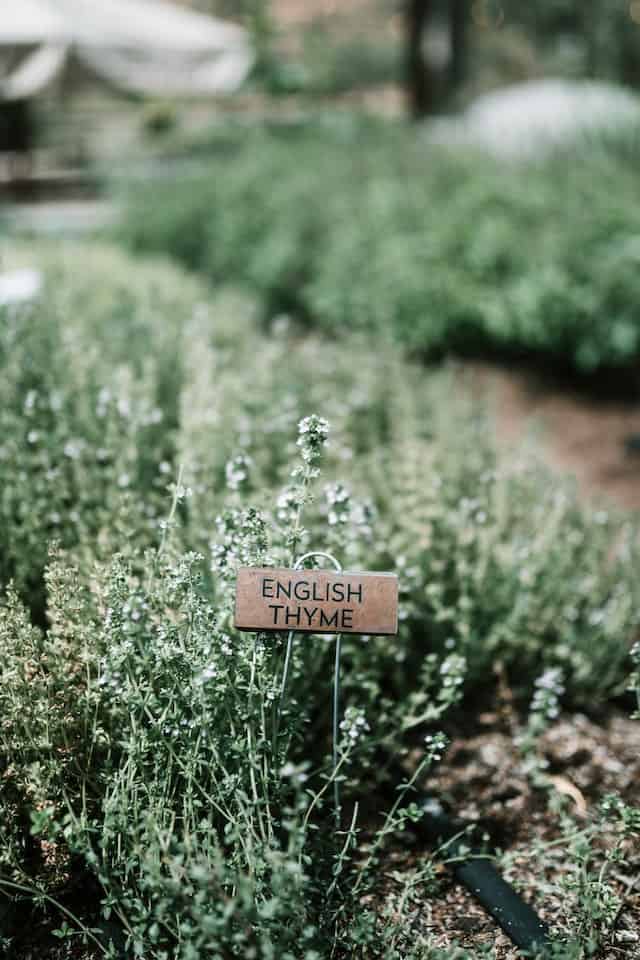
Thyme is a low-growing perennial herb that can be planted in well-drained soil in May. It thrives in full sun and is drought-tolerant once established, making it easy to care for. Space thyme plants about 12 inches apart, and water them lightly until they settle in. They only require occasional watering afterwards. Thyme can be harvested continuously; simply snip off sprigs as needed, which encourages new growth. Harvesting before flowering can yield better-flavored leaves.
Chives
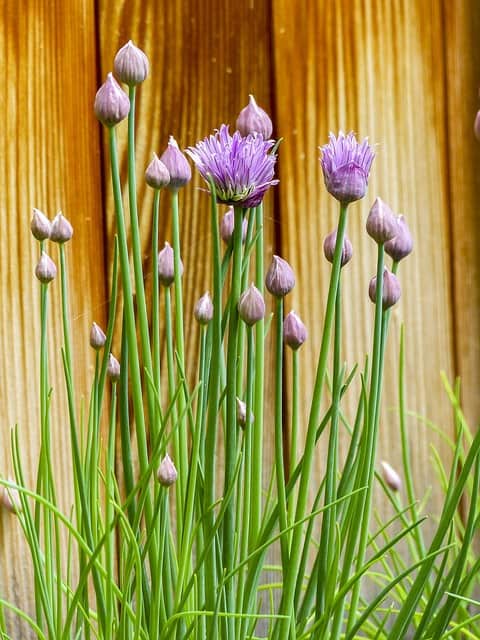
Chives are one of the first herbs to sprout in the spring, and planting in May allows them to establish fully before the summer sun. They thrive in well-drained soils and full sun or partial shade. Space chive plants 10-12 inches apart to allow for their spread. They appreciate regular watering but are relatively drought-tolerant. Regular harvesting not only enhances their flavor but encourages bushier growth, and their lovely purple flowers are also edible and attract pollinators.
Parsley
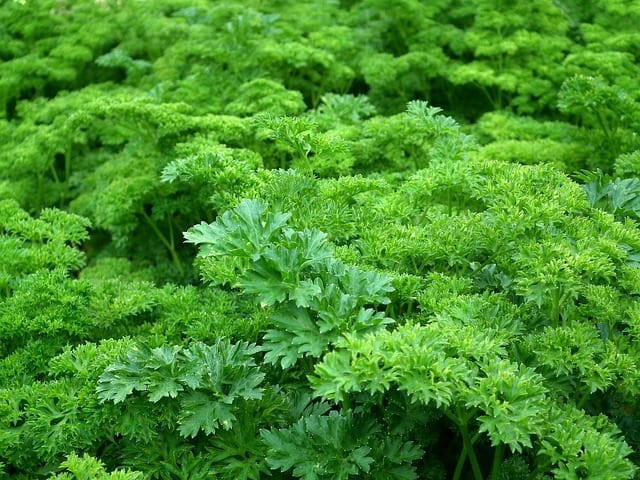
May is an excellent time to plant parsley, which can handle a range of growing conditions, although it prefers rich, moist, well-drained soil. Sow seeds directly about 1/4 inch deep and space them 6-8 inches apart. It can take longer to germinate, so patience is vital. Water regularly, as parsley thrives in moist soil, and consider covering the seeds with a row cover to retain moisture. Beginning to harvest leaves when they reach about 6 inches in height encourages continued growth throughout summer.
Sage
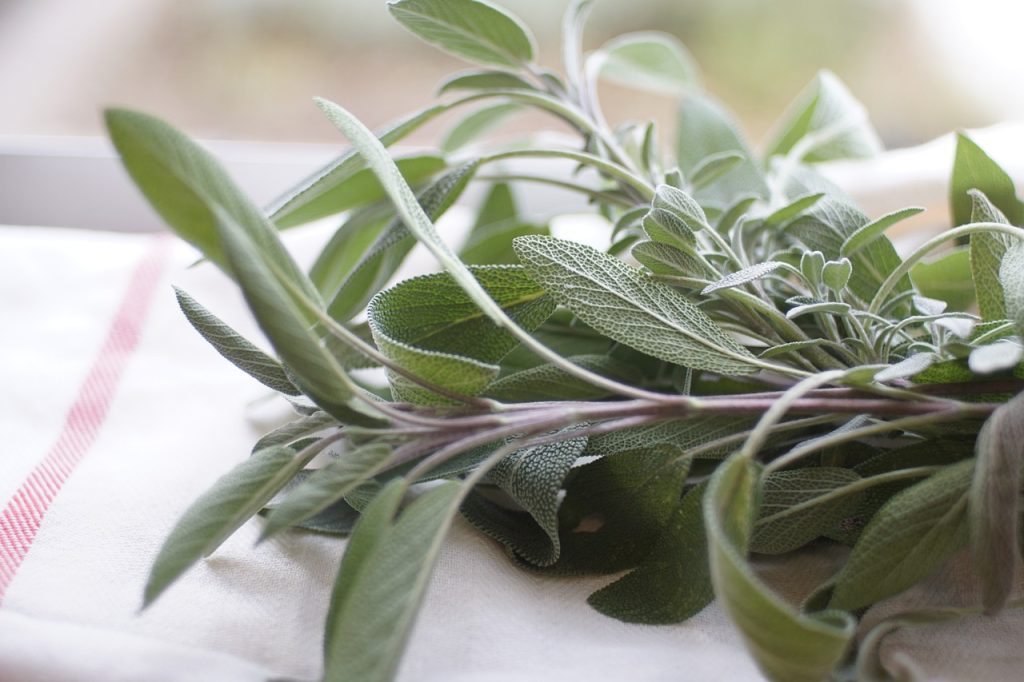
Sage is another versatile herb that flourishes in well-drained soil. May is the right time to plant this fragrant perennial. Space plants 2-3 feet apart to accommodate their growth and provide full sun exposure for optimal results. Sage will require regular, deep watering until established. After the first year, it becomes drought-tolerant and needs minimal care. Pruning back in early spring helps manage its bushy growth and encourages healthy foliage for culinary uses.
Mint
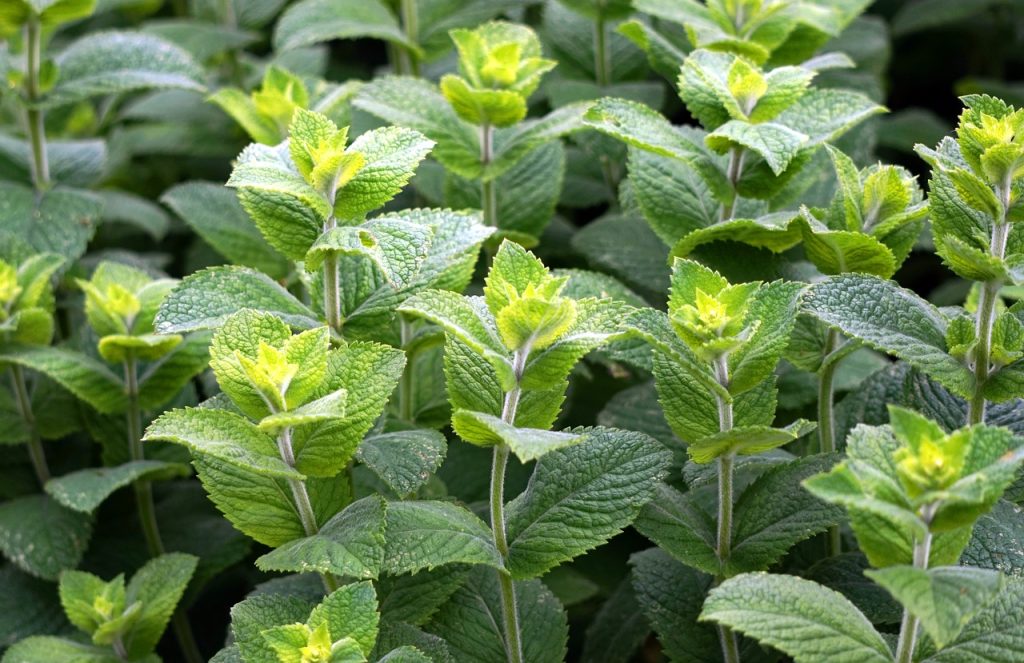
Mint grows vigorously and is best planted in contained areas to prevent invasive spreading. May planting allows it to establish roots before the heat. Mint prefers rich, moist soil and partial shade but grows quickly in full sun, requiring regular watering to maintain consistent moisture. Use at least 10-12 inches of spacing between plants to allow room for growth. Mint can be harvested continuously, so regularly snip leaves to encourage bushiness and retain that fresh flavor.
Rosemary
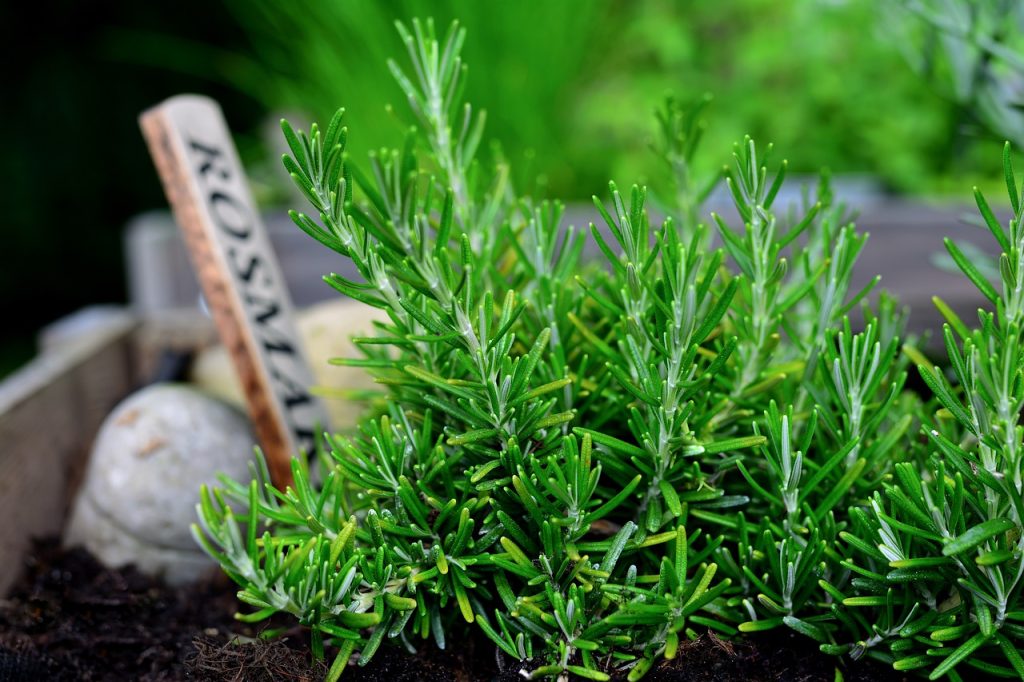
Rosemary is a heat-loving herb that prefers well-draining soil and full sun exposure. May is the right time to plant this fragrant perennial. Space rosemary plants about 2-3 feet apart as they can become quite large. Water them thoroughly at planting and then use a deep watering approach during dry spells. Once established, they are drought-tolerant, but careful pruning will promote bushier plants and essential oils for culinary and therapeutic uses.
Dill
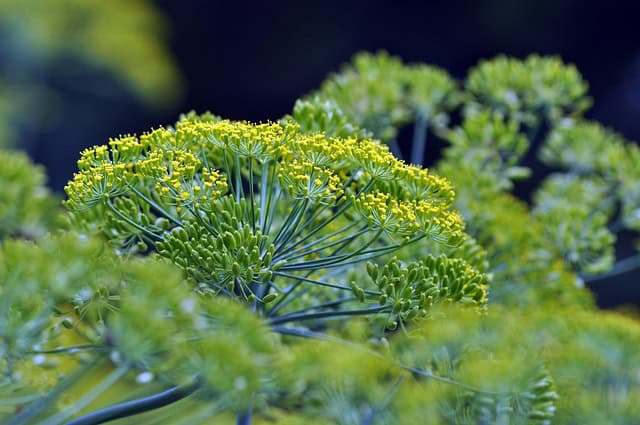
Dill seeds can be directly sown in May for a bountiful summer crop. This annual herb prefers full sun and well-drained soil, so plant seeds about 1/4 to 1/8 inch deep, spacing them at least 12 inches apart to allow for growth. Dill will grow quickly—typically within 6-8 weeks—and regular watering will enhance leaf production during the growing period. Dill thrives when not overcrowded and benefits from deadheading flowers to ensure continuous leaf production.
Each herb plays a unique role in the culinary world, and planting them in May allows for a delightful herb garden that can enhance your cooking and gardening experience. Proper sunlight, soil, and watering practices will reward you with lush growth and flavorful, fragrant herbs.
Landscape Plants To Plant
For gardeners looking to enhance their landscape during May in Zone 7, a myriad of appealing plants can thrive in this warm season. These plants not only beautify gardens but also promote biodiversity and habitat for insects and wildlife. Here are ten landscape plants to consider:
Japanese Maple (Acer palmatum)
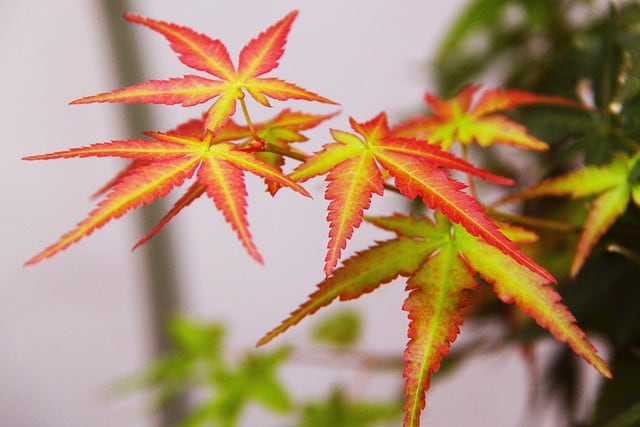
Japanese Maples add stunning visual interest with their graceful form and beautiful foliage. Planting young trees in May allows roots to establish before the heat of summer. This ornamental tree thrives in organic, well-drained soil and partial shade, although some varieties adapt to full sun. Make sure to water them deeply during their establishment phase, ensuring continuous moisture through dry spells. Regular pruning helps manage shape and size while encouraging healthy growth.
Hydrangeas
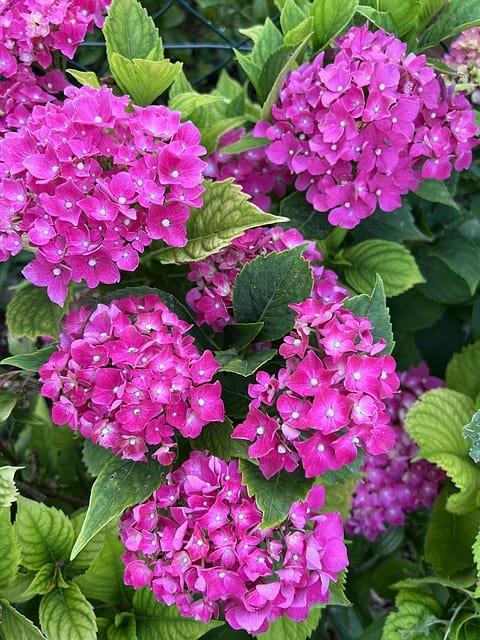
Hydrangeas are beloved for their large, colorful blooms and can be planted in May. These versatile shrubs can take on various forms—the mophead, panicle, and oakleaf types thrive in full sun to partial shade. Plant hydrangeas in well-drained, nutrient-rich soil, spacing plants about 3-5 feet apart. They require consistent moisture, especially during dry periods, so deep watering is essential. Pruning in late winter into early spring can help shape the plant and promote newer growth.
Roses
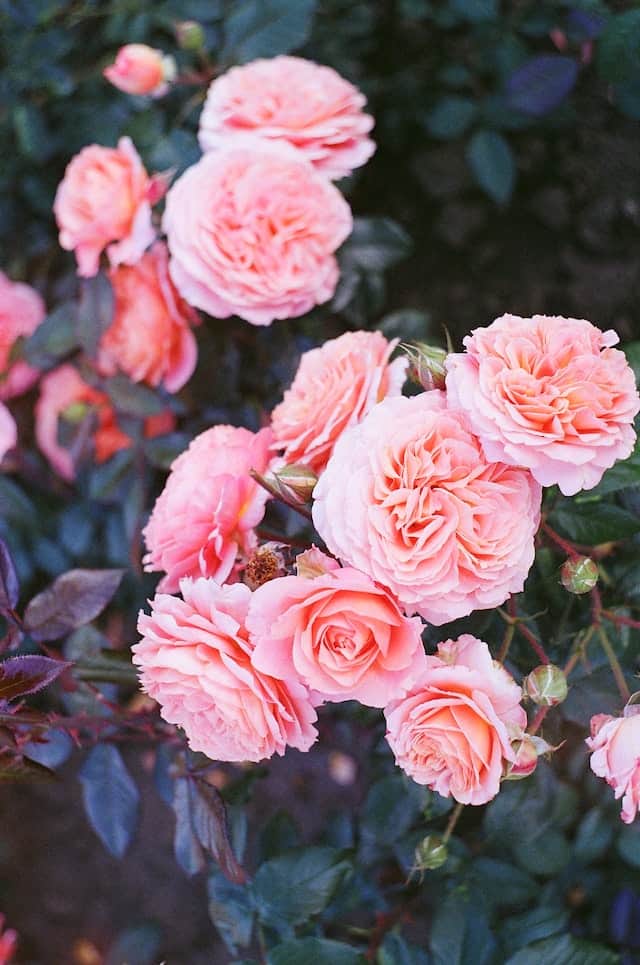
May is an ideal time to plant both bare-root and potted roses. These classic garden plants thrive in rich, well-drained soil with full sun, providing delightful blooms and fragrances. Ensure soil is adequately enriched with organic compost. Space plants 3-6 feet apart, depending on the variety. Roses need regular watering—at least once a week—especially during dry spells. Fertilizing in early spring promotes healthy foliage and bountiful flowers, and deadheading will encourage a prolonged blooming period.
Boxwood
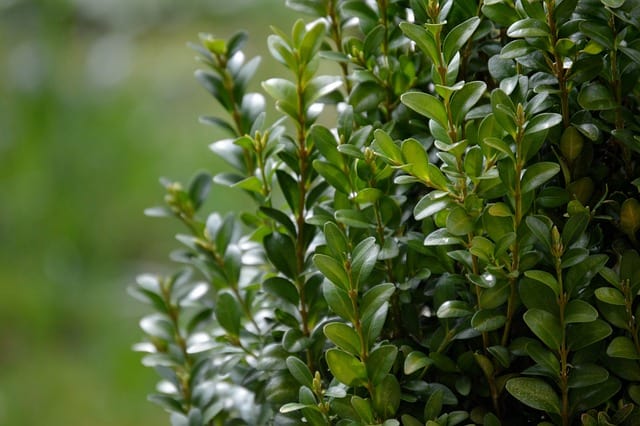
Boxwoods are popular evergreen shrubs ideal for hedges and borders. They can be planted in May to ensure healthy growth through summer. These hardy plants prefer well-drained soil and full sun to partial shade. Space boxwoods approximately 2 feet apart for hedging and provide consistent moisture during their establishment. Regular pruning helps shape the plant and encourages denser growth. Once established, boxwoods are relatively low-maintenance and can tolerate varying weather conditions.
Sedum (Stonecrop)

Sedum is an excellent choice for low-maintenance, drought-tolerant landscaping. Planting in May allows robust growth for added color and texture in gardens. These hardy succulents thrive in poor, well-drained soil and full sun, requiring very little water once established. Space sedum plants about 12 inches apart to allow them to expand. A light fall pruning can help rejuvenate their growth and maintain desirable shapes during the winter months.
Daylilies

In addition to their beauty, daylilies are durable perennials that adapt easily to various landscapes. With blooming times extending through late spring and summer, they’re perfect for planting in May. They thrive in well-drained soil and are drought-tolerant once established, making them a fuss-free option for busy gardeners. Space them 18 inches apart and ensure consistent watering during their establishment. Deadheading can encourage additional blooms and prolong flowering seasons.
Liriope (Monkey Grass)
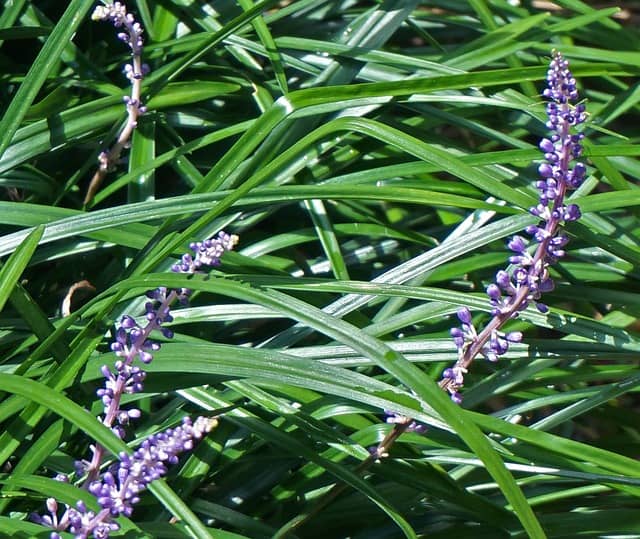
Liriope is an attractive ground cover suited for shady areas. May is an excellent month for planting, as it allows the plant to get established. Liriope thrives in a range of soil types but prefers well-drained conditions. Space plants 12-18 inches apart, and provide consistent watering during their establishment phase. Liriope requires minimal care once established, and regular mulching can help suppress weeds. This hardy perennial showcases spikes of purple flowers in late summer, adding visual interest amid green foliage.
Japanese Anemone
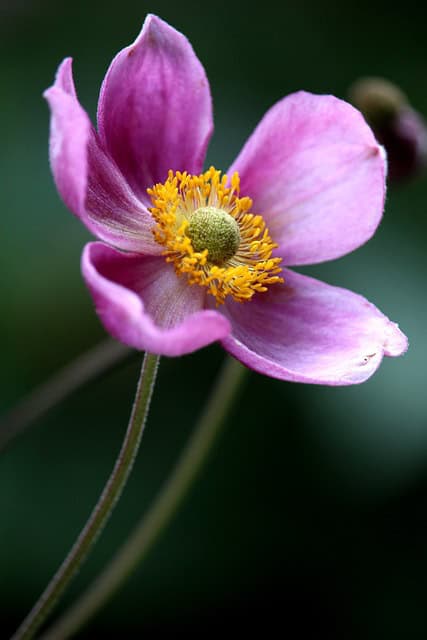
Japanese Anemones are perennial plants popular in mixed borders for their charming fall blooms. Planting in May provides time for root establishment before flowering in late summer. They prefer well-drained soil and dappled sunlight, thriving in woodland gardens and shaded areas. Space plants about 12-18 inches apart and keep soil moderately moist. Anemones do well with regular watering during hot spells, and maintaining a layer of mulch will help retain moisture and redirect growth.
Butterfly Bush (Buddleja)
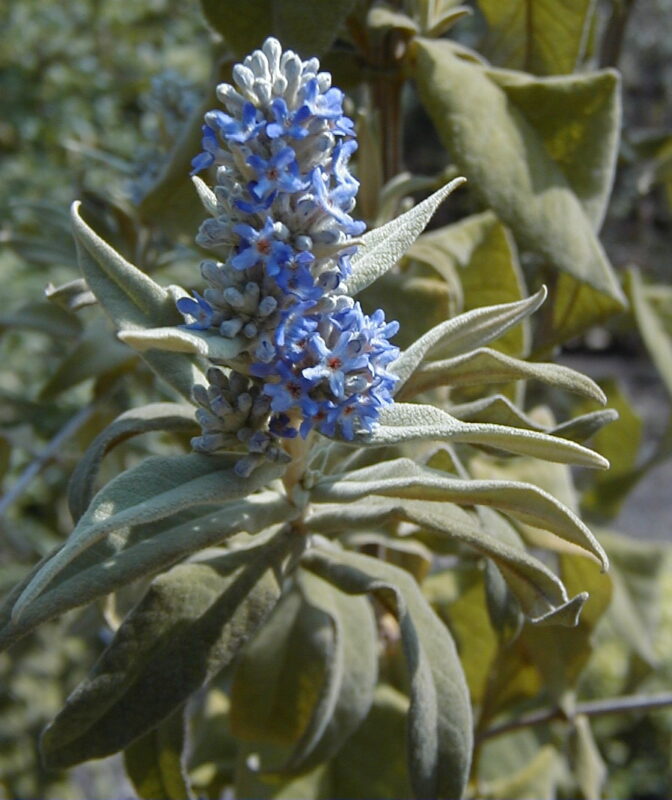
Known to attract butterflies, this perennial shrub should be planted in full sun for optimal growth. May is ideal for transplanting established plants. Butterfly bushes thrive in well-drained soil, spaced about 3-5 feet apart to allow for air circulation. Regular watering in the establishment phase is crucial, but once established, they are quite drought-tolerant. Prune yearly to encourage denser foliage and prolong blooming while keeping them within bounds.
Coreopsis
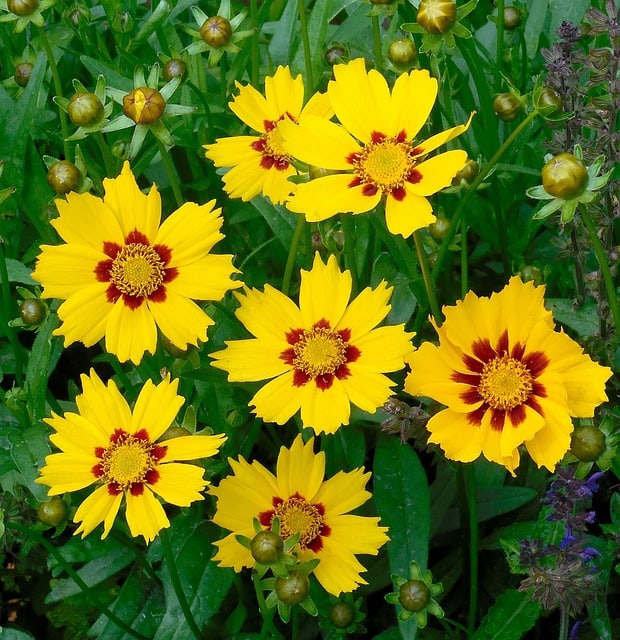
Coreopsis is a resilient, drought-tolerant perennial that blooms profusely in sunny conditions. Planting in May allows good establishment before summer heat. Space plants about 12-18 inches apart, and ensure they are sown in well-drained soil. They appreciate regular watering in their early stages, but once established, they can tolerate dry spells. Deadheading spent flowers stimulates further blooms, providing continuous color throughout summer.
With careful consideration of the climate, space available, and growth conditions, planting landscape plants in May can elevate the aesthetics and ecological balance of your garden. From the classic beauty of roses and hydrangeas to the unique charm of daylilies and butterfly bushes, there is an array of options to suit any garden design.


